I’ve just completed the third month of my 2020-21 Covid winter project – another thirty of my favourite pollinators posted in photo stories on my Facebook and Instagram accounts. Here’s their #janetsdailypollinator family photo!
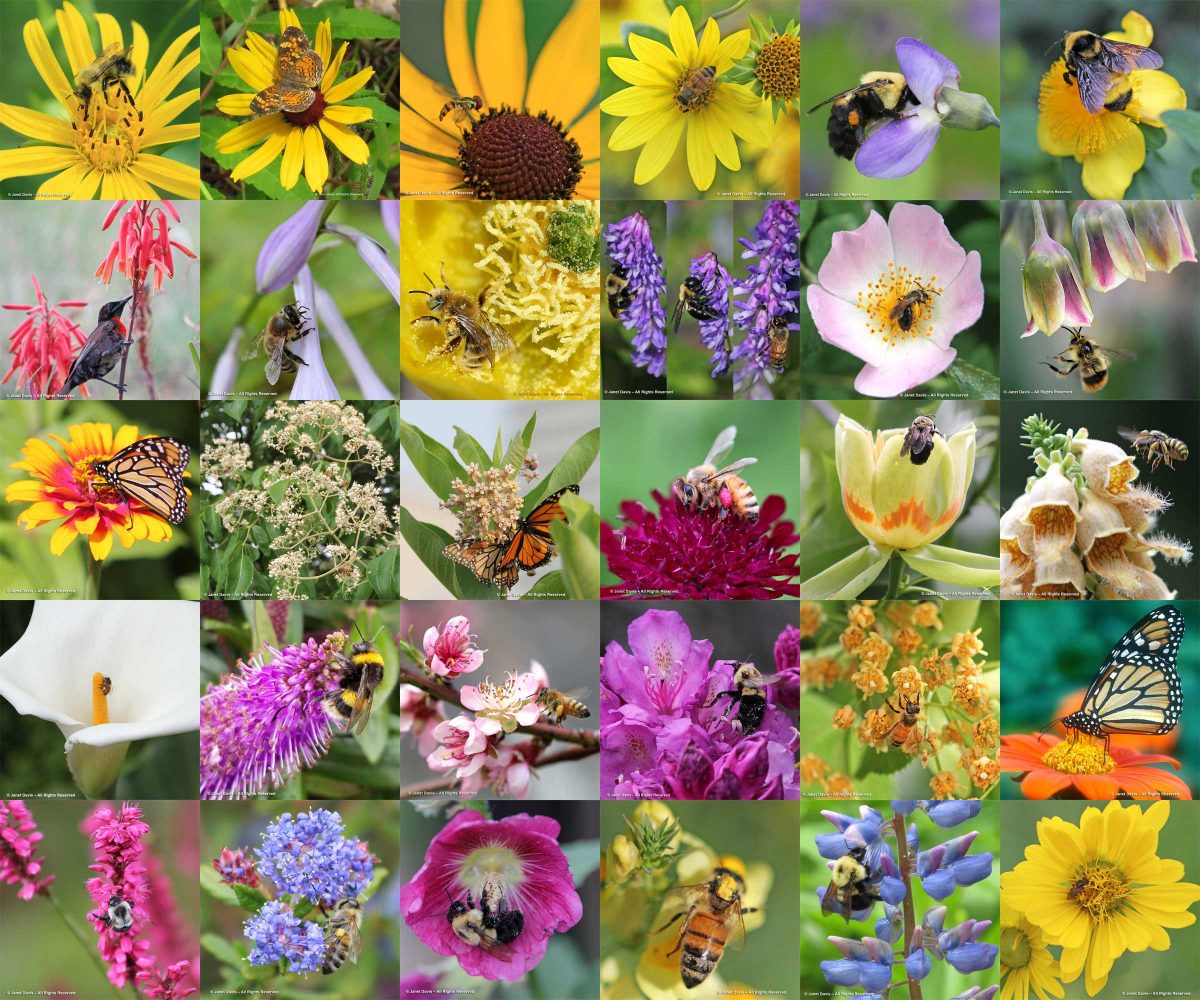
I began on January 2nd (I took New Year’s Day off) with a continuation from December of the “damned yellow composites” or “DYCs” (yellow daisies that look frustratingly similar) that grow in my meadows at the cottage on Lake Muskoka north of Toronto. It was cup plant’s turn (Silphium perfoliatum), complete with bumble bees and, yes, seed-stealing chipmunks.
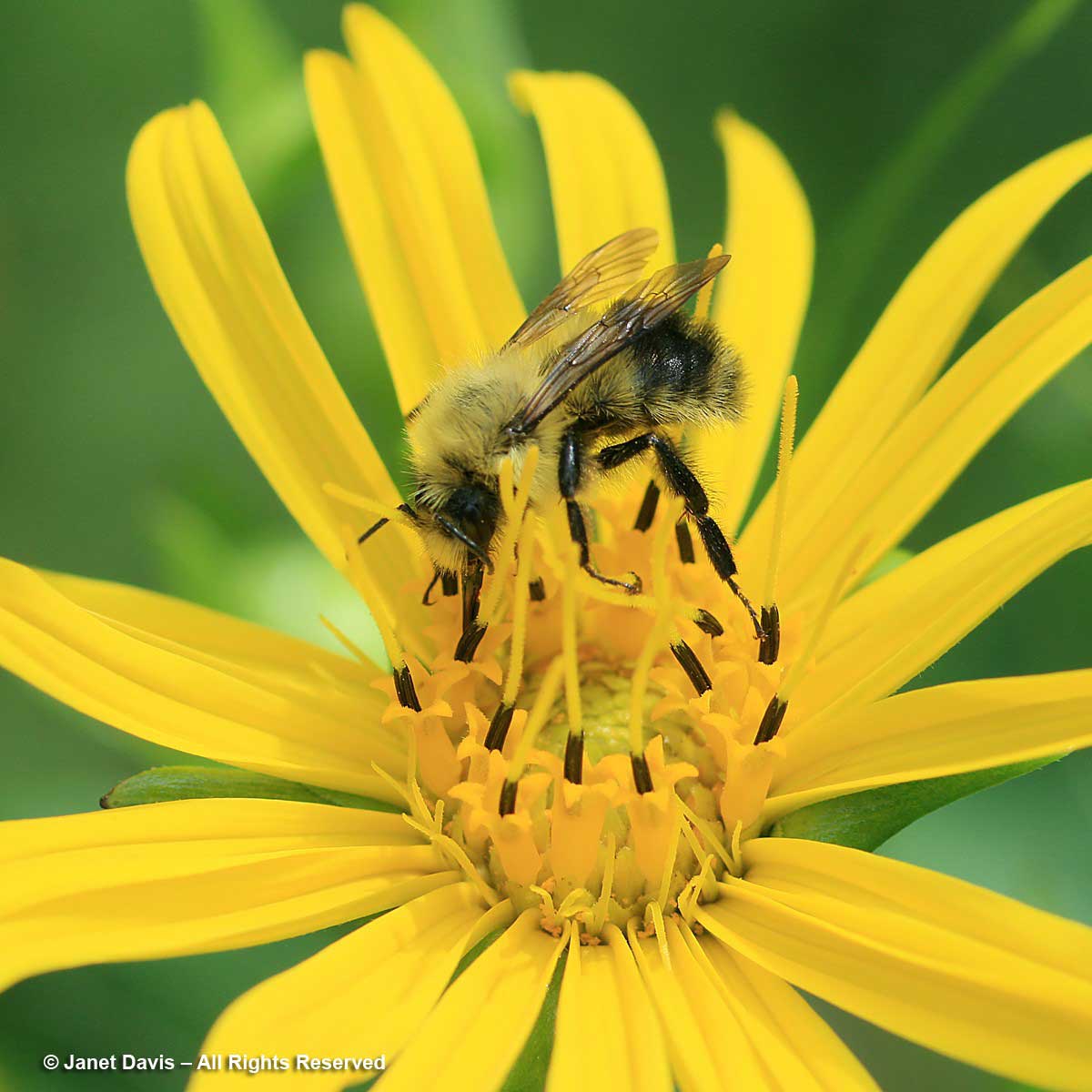
On January 3rd, I profiled a steadfast old favourite: biennial blackeyed susan (Rudbeckia hirta) with a pearl crescent butterfly. It was the first wildflower I sowed at the cottage to hold the soil on the slope That first year, way back in 2004, I had thousands of yellow daisies. What a joyful summer that was. I celebrated it last winter in my musical Van Morrison blog, ‘Brown Eyed Girl(s)’.
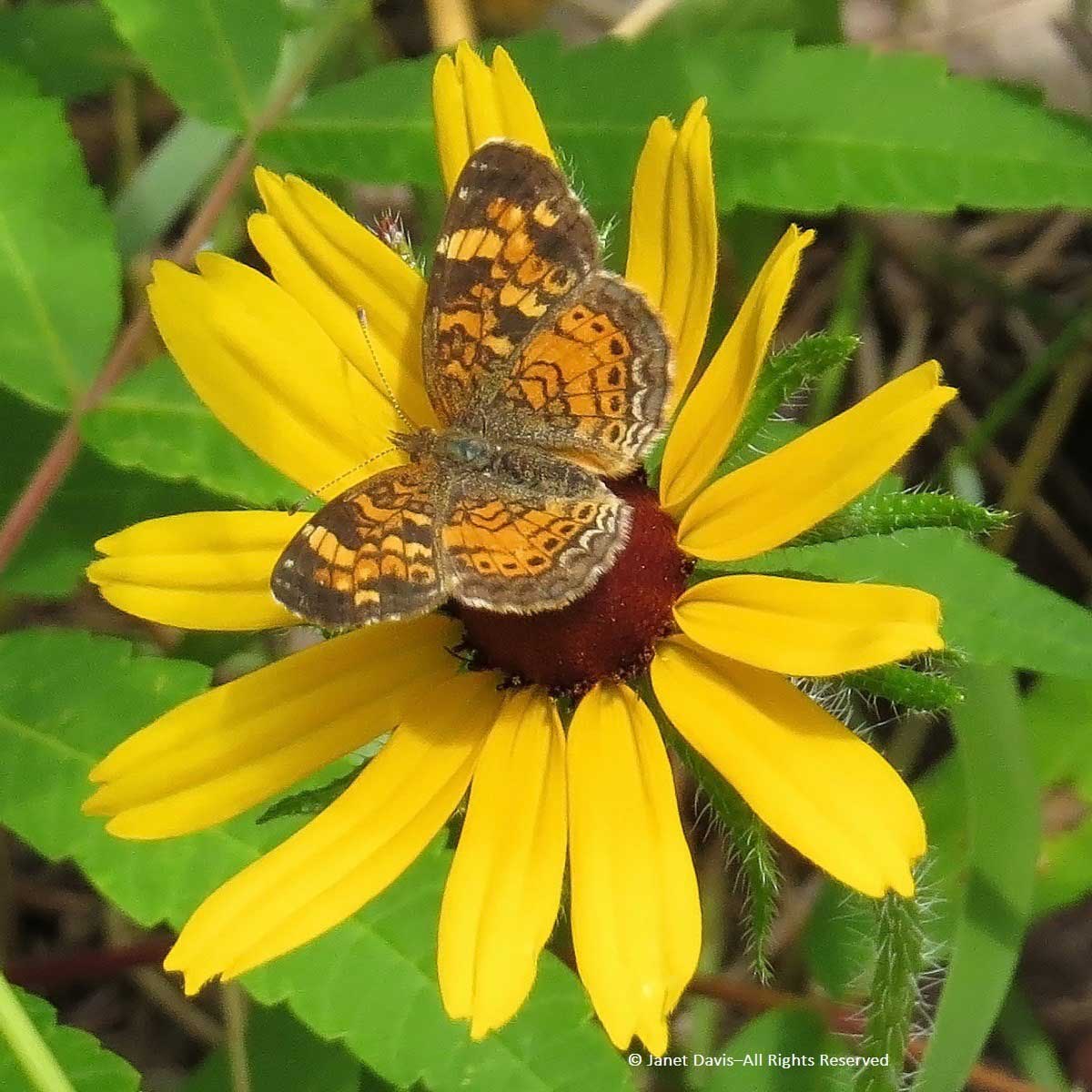
The late summer native sweet blackeyed susan (Rudbeckia subtomentosa) was my yellow daisy for January 4th, with a tiny hoverfly aboard. Such an elegant perennial – my favourite of the entire clan.
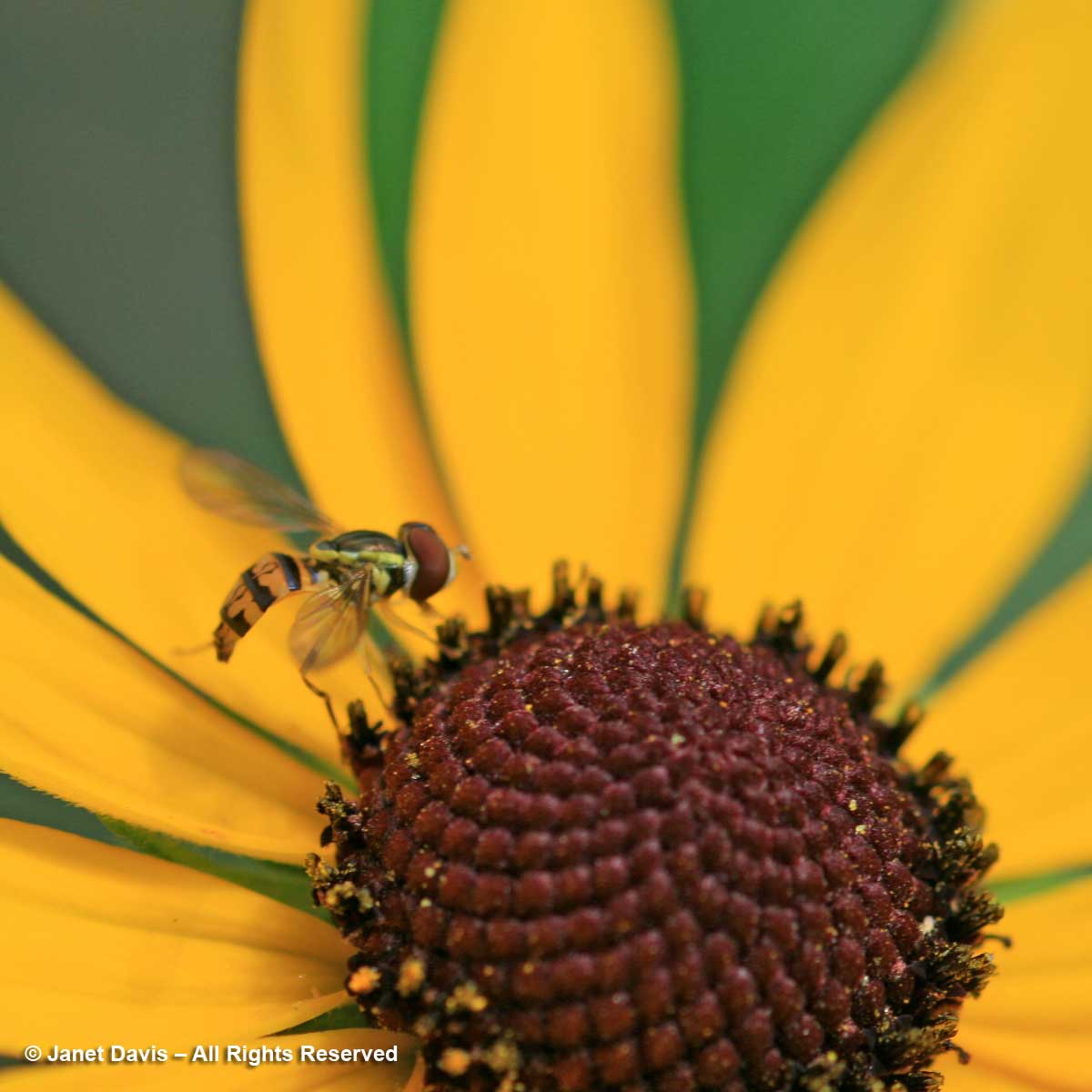
Helianthus ‘Lemon Queen’ was my DYC for January 5th, featuring a honey bee. I grow this tall hybrid in my front yard pollinator garden in Toronto and in my meadows on Lake Muskoka
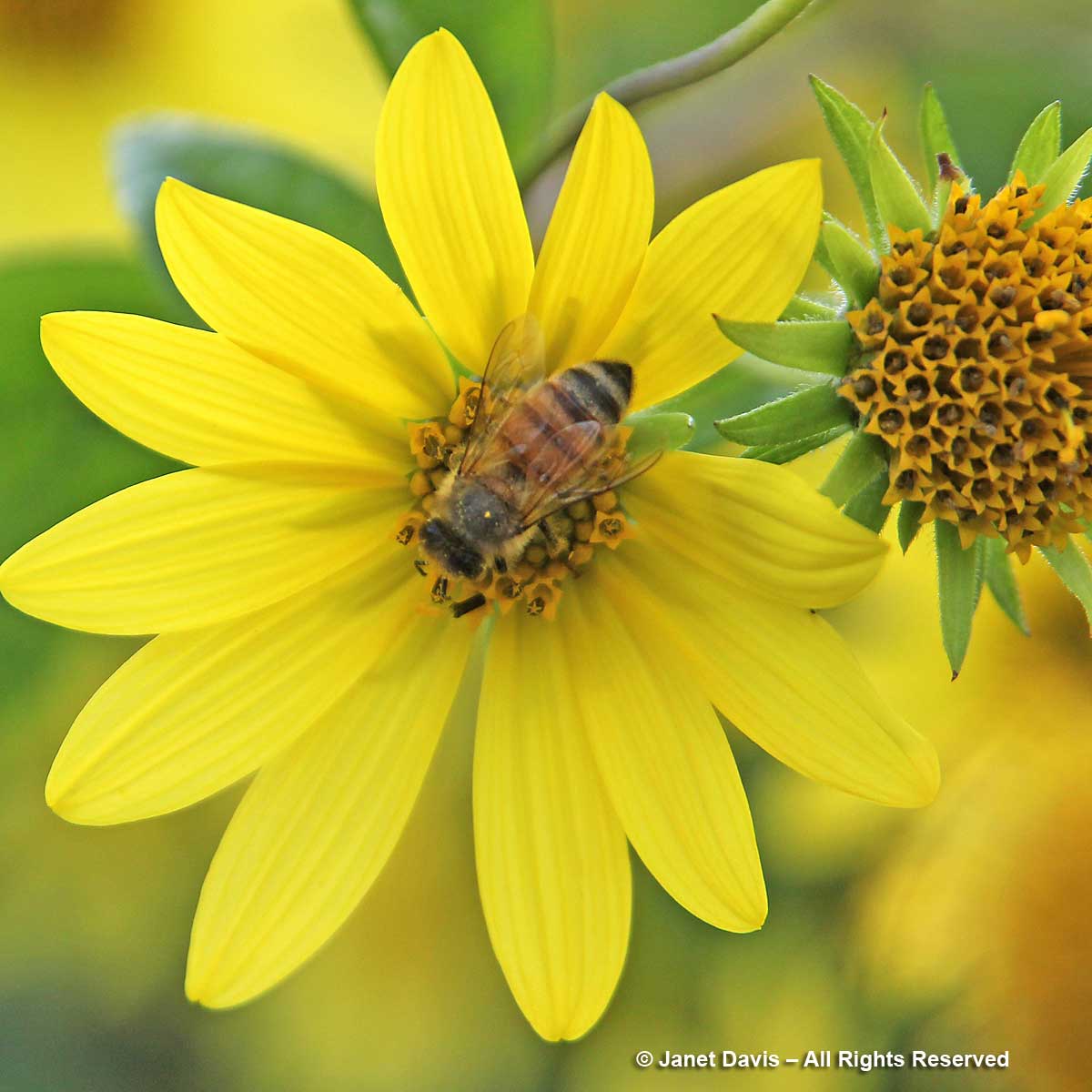
Bumble bee queens love native blue false indigo (Baptisia australis), my pollinator plant for January 6th, aka Epiphany, or in the Greek Orthodox church, Theophany. In fact, Baptisia comes from the same root as baptism or ‘bapto’ meaning to change by immersion – since Baptisia is a dye plant.
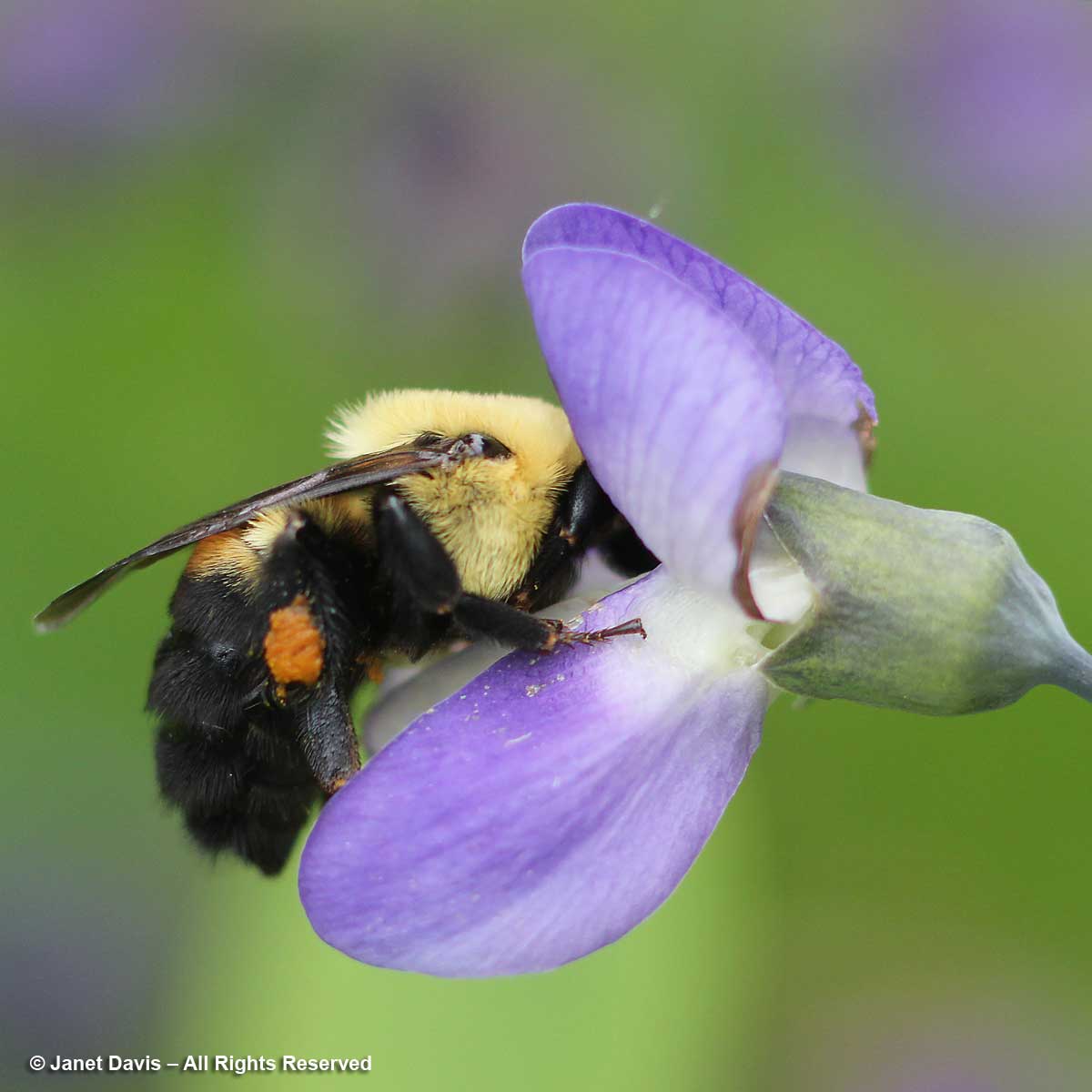
Continuing in the same vein, January 7th is the Greek Feast Day of the Synaxis of Agios Ioannis, John the Baptist’s birthday, so I celebrated several species of St. John’s wort (Hypericum spp.) beginning with Bombus auricomis, the black-and-gold bumble bee on Hypericum frondosum. I had never seen that bumble bee before, but that made sense because I photographed it in the amazing Mary Livingston Ripley garden in the Smithsonian gardens in Washington D.C.
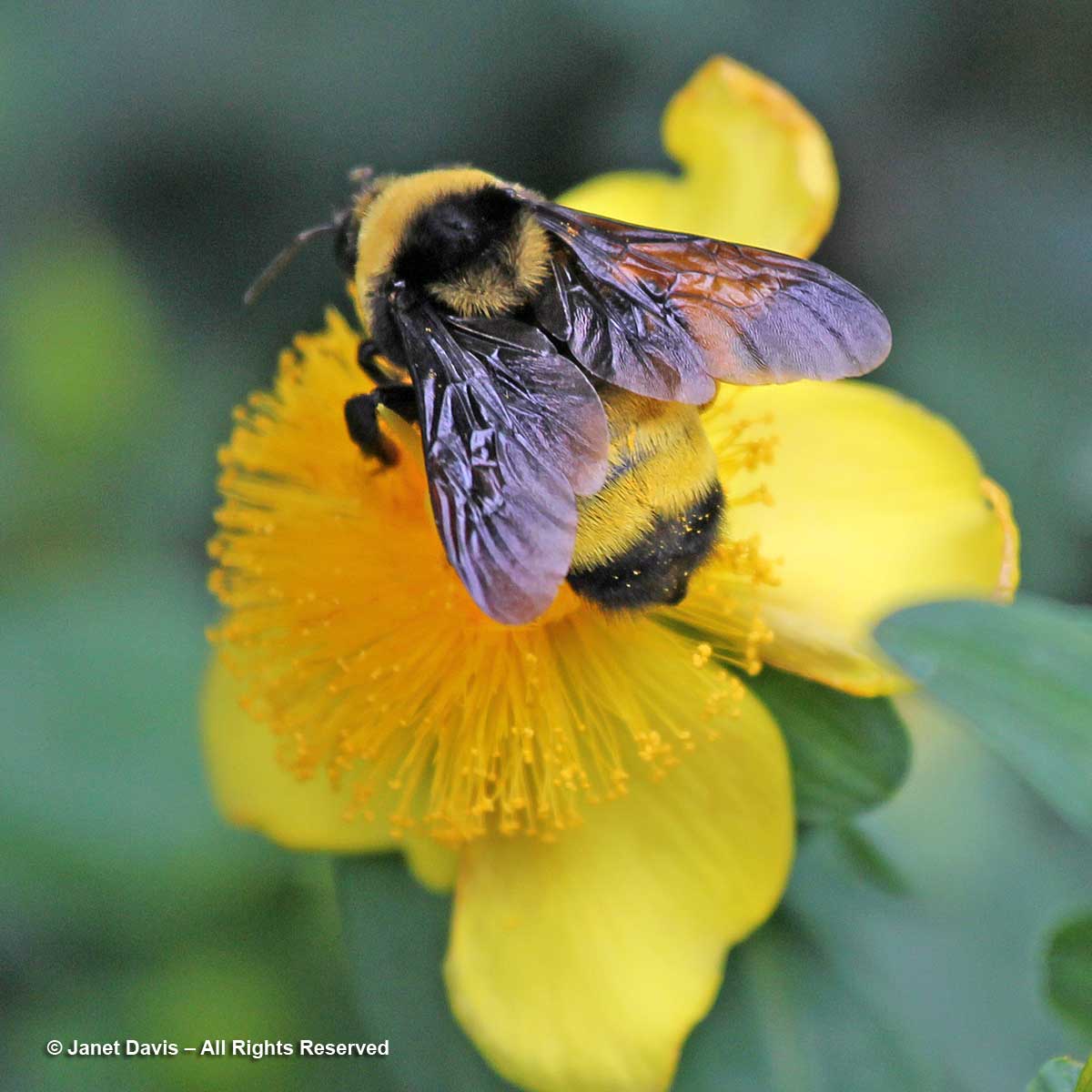
Recognizing that January is a cold month, I hopped a virtual flight to Kenya and Los Angeles on January 8th, where I found lots of beautiful aloes with sunbirds (below), hummingbirds, mockingbirds and honey bees. By the way, I wrote a long blog on my trip to the Los Angeles County Arboretum featuring so many aloes! Have a look.
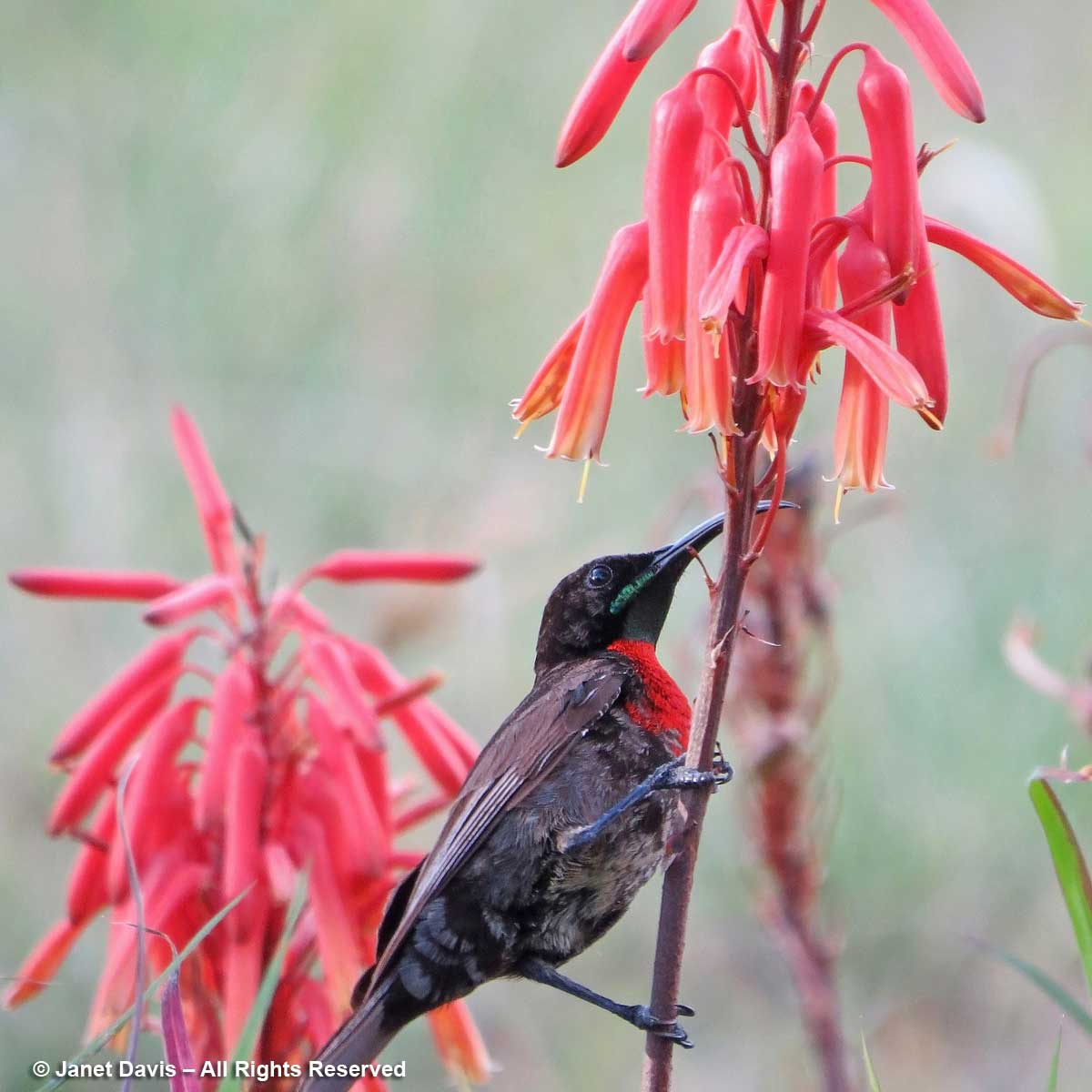
January 9th saw me reporting on robberies – honey bees and carpenter bees carrying out nectar theft on the slender corollas of hostas in my garden.
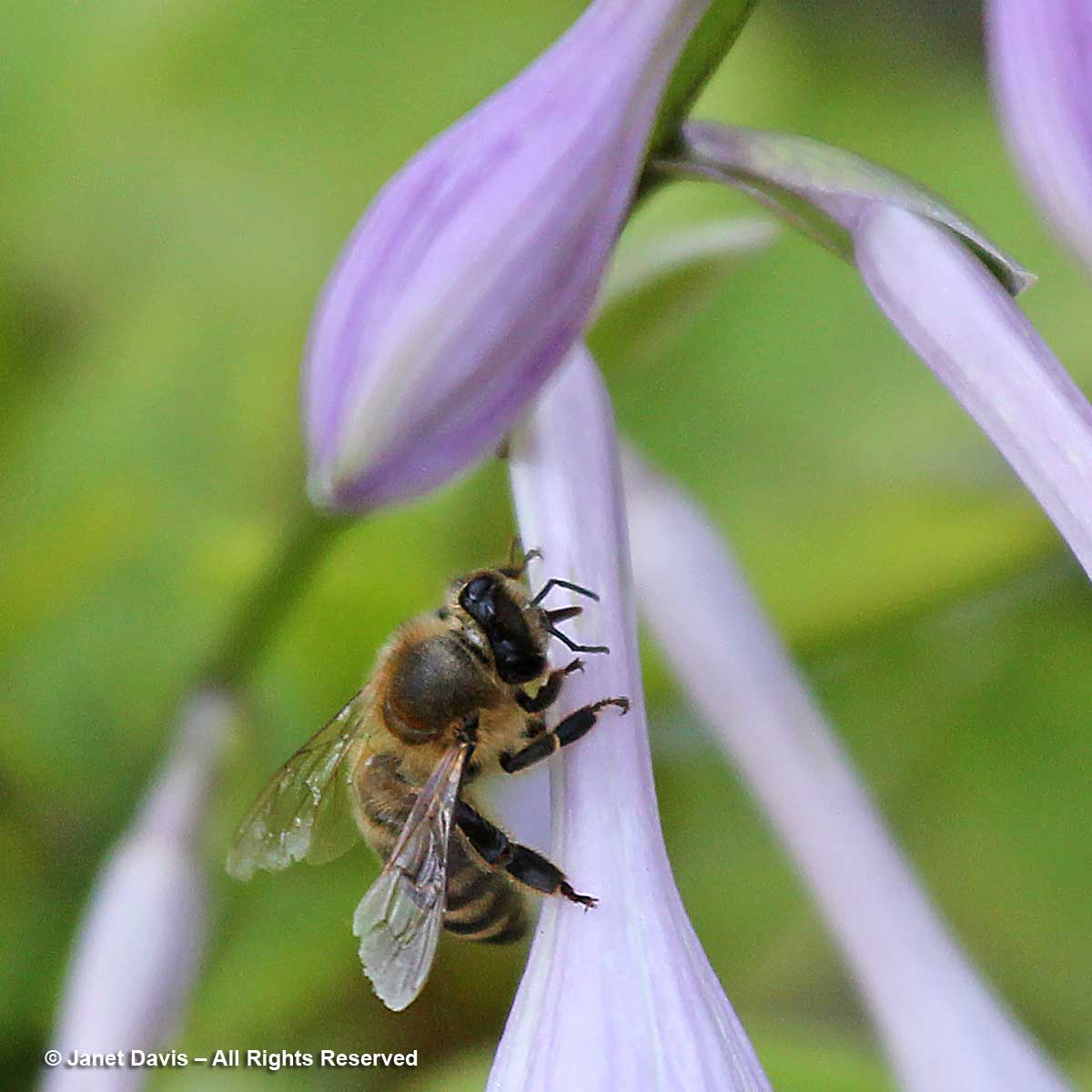
On January 10th, I recalled a hike I took near Tucson where I found a cactus turret bee (Diadasia australis) rolling in the pollen of Engelmann’s prickly-pear cactus (Opuntia engelmannii).
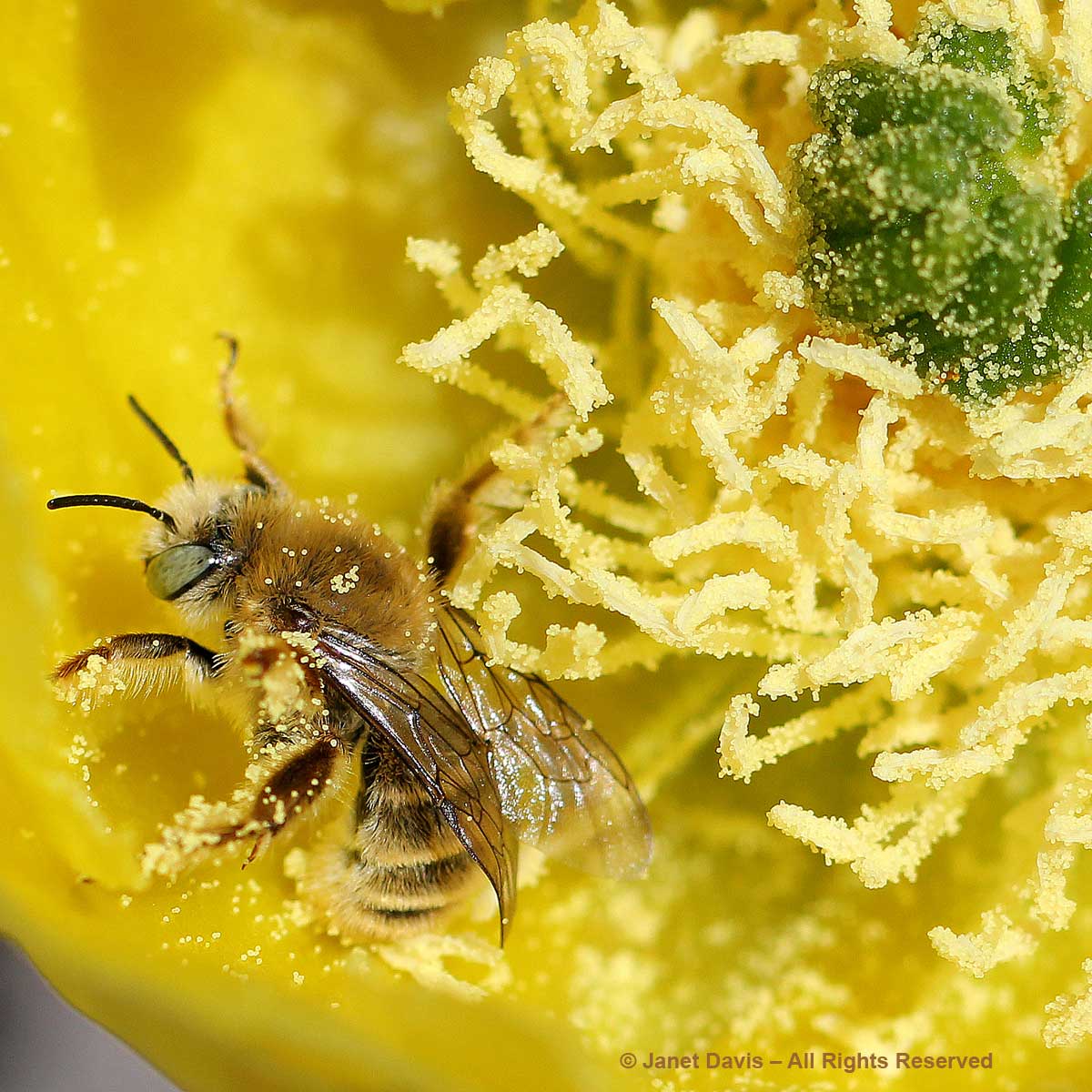
Bird vetch, cow vetch or tufted vetch (Vicia cracca) may be a common weed, but bees love it, as I illustrated, below, on January 11th.
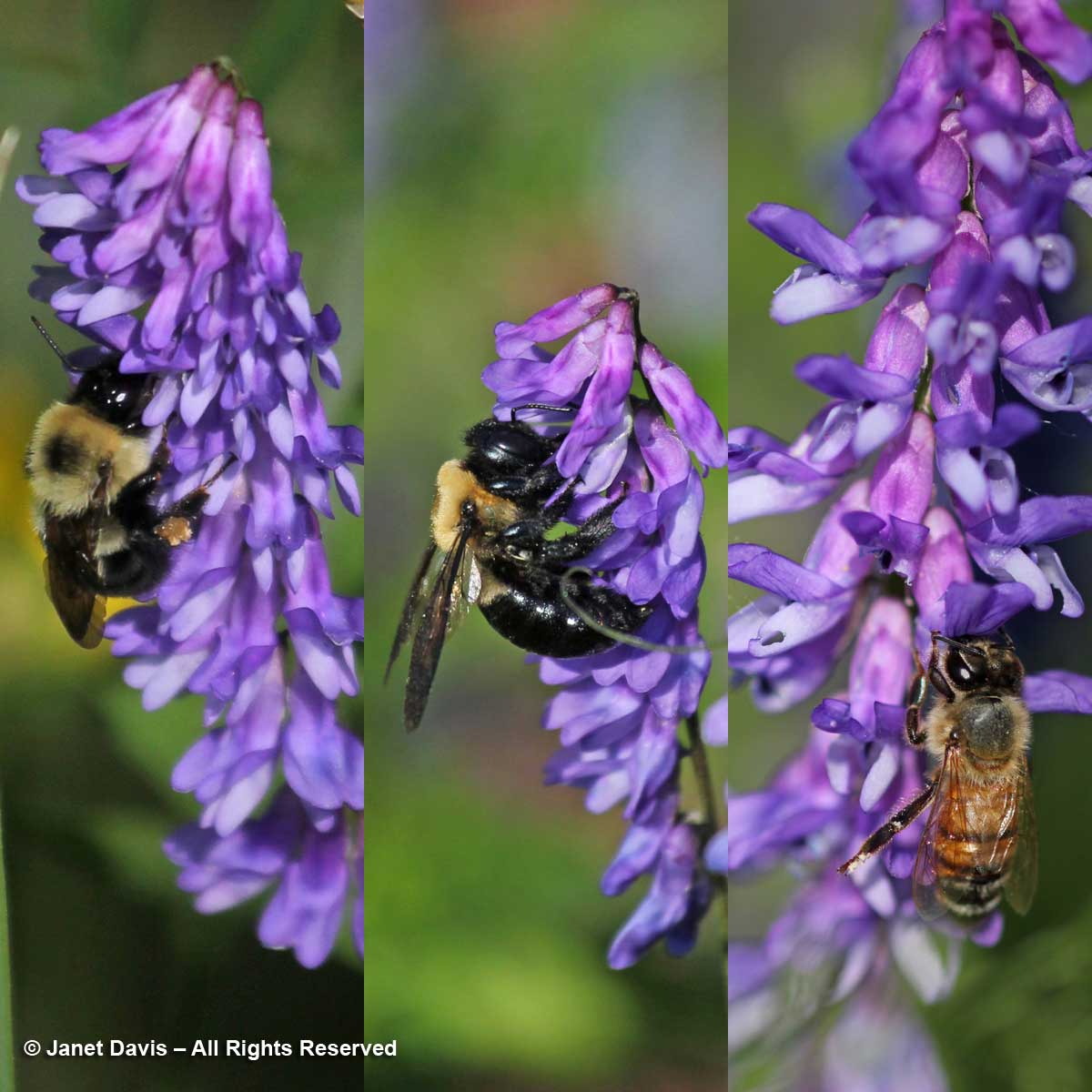
You can grow roses and still host bees – but you have to choose species and cultivars that have exposed stamens so bees can gather pollen. That means forgoing the doubles that bees can’t use. On January 12th, I gave some examples, including the dog rose (R. canina), below.
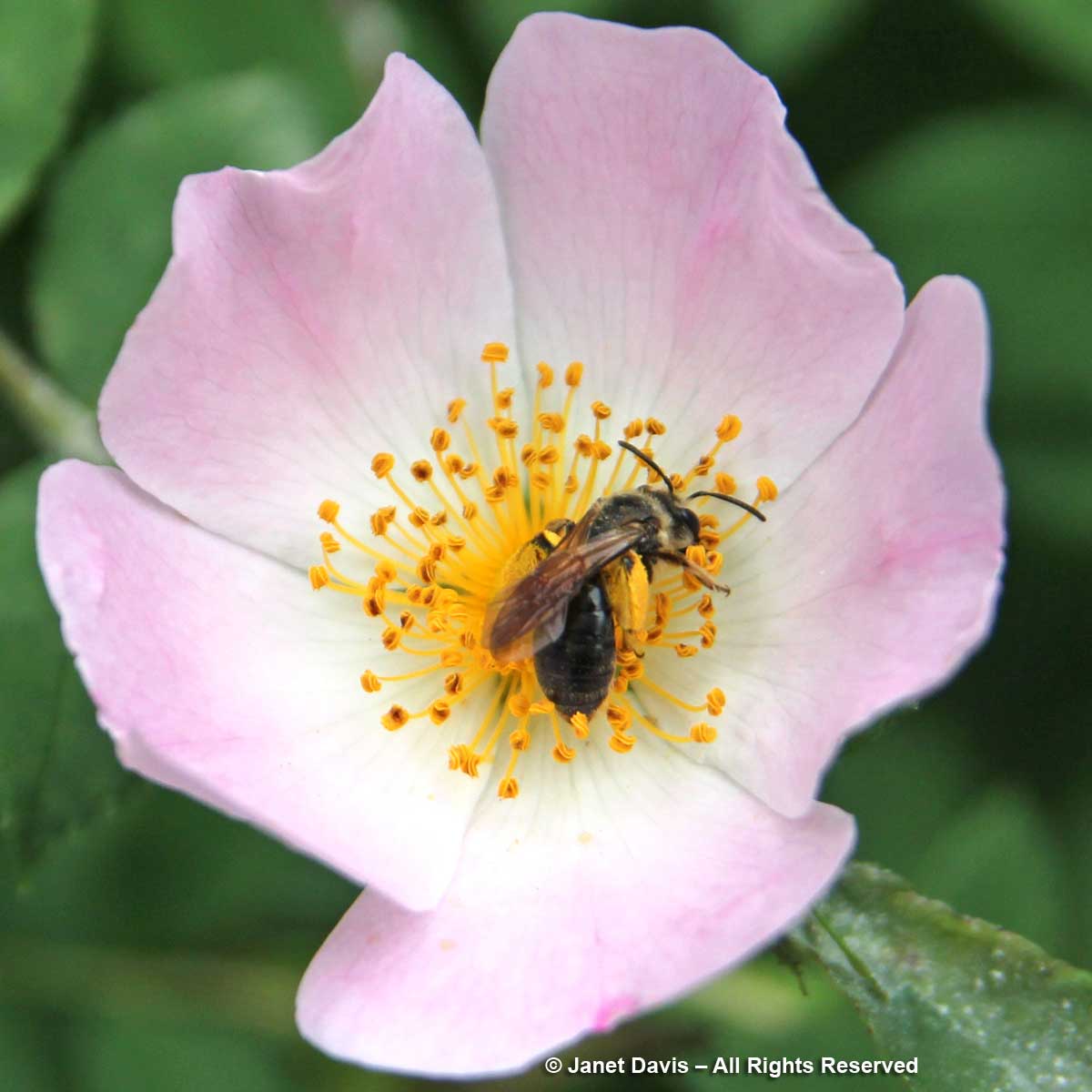
On January 13th I celebrated the wonderful nectar-rich Sicilian honey lily (Allium siculum), also known as Nectaroscordum. Even rain-soaked red-belted bumble bees (Bombus rufocinctus) are unable to resist its charms!
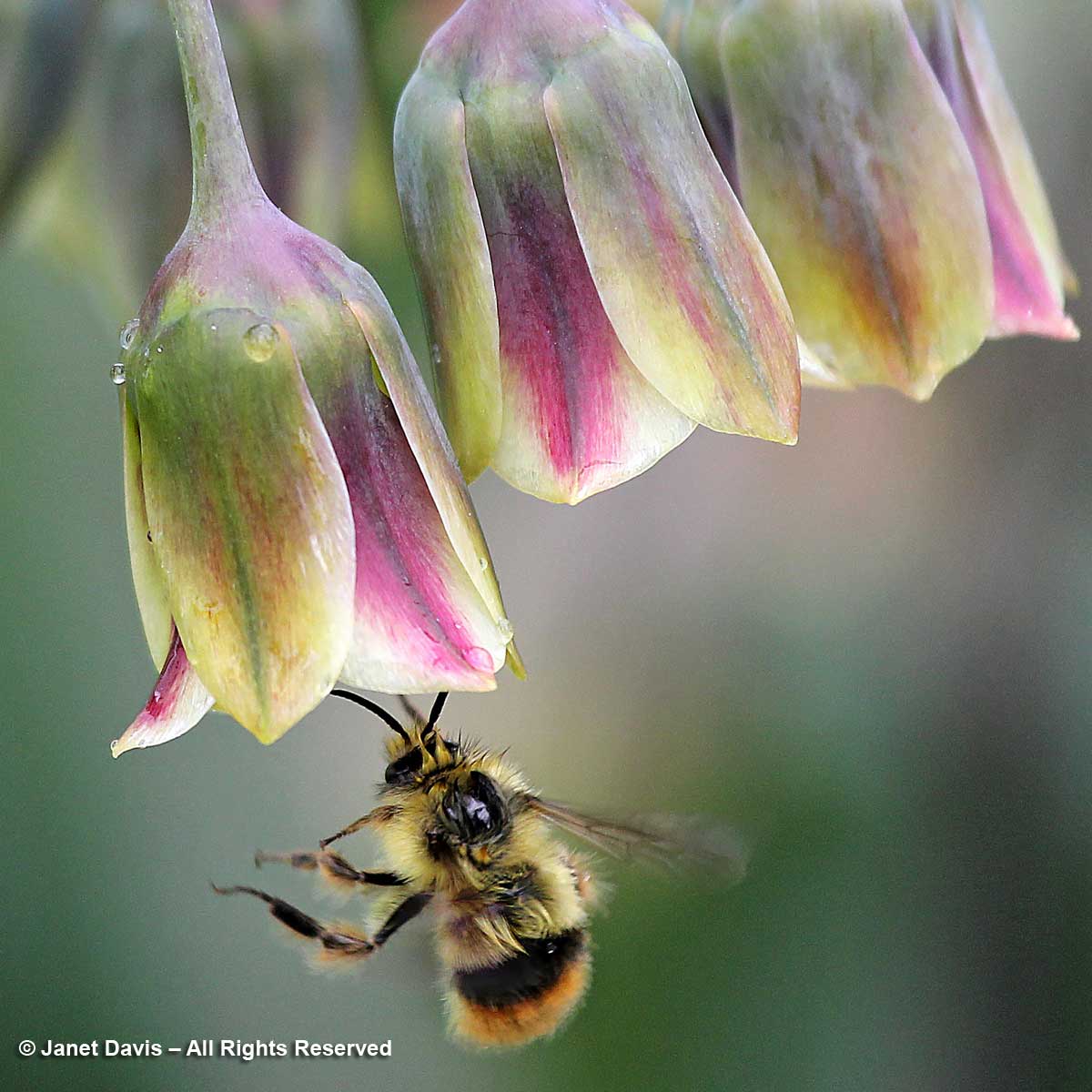
Colourful zinnias, include Z. elegans ‘Zowie Yellow Flame’, below, hosting a monarch butterfly, were my pollinator choice for January 14th.
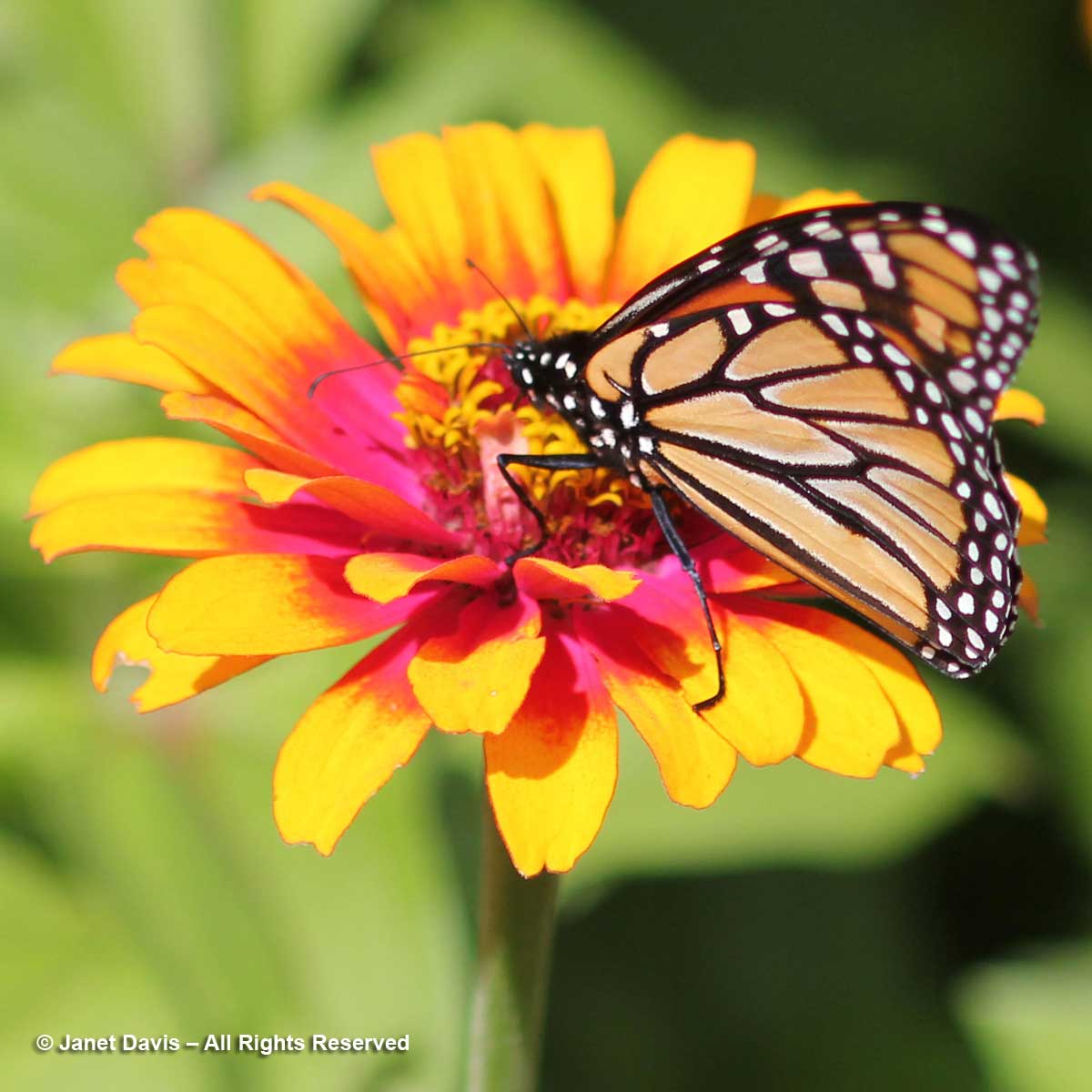
On January 15th, I recalled finding loads of honey bees foraging on the well-named “bee bee tree” or Korean evodia (Tetradium daniellii) at Burlington’s Royal Botanical Garden one August.
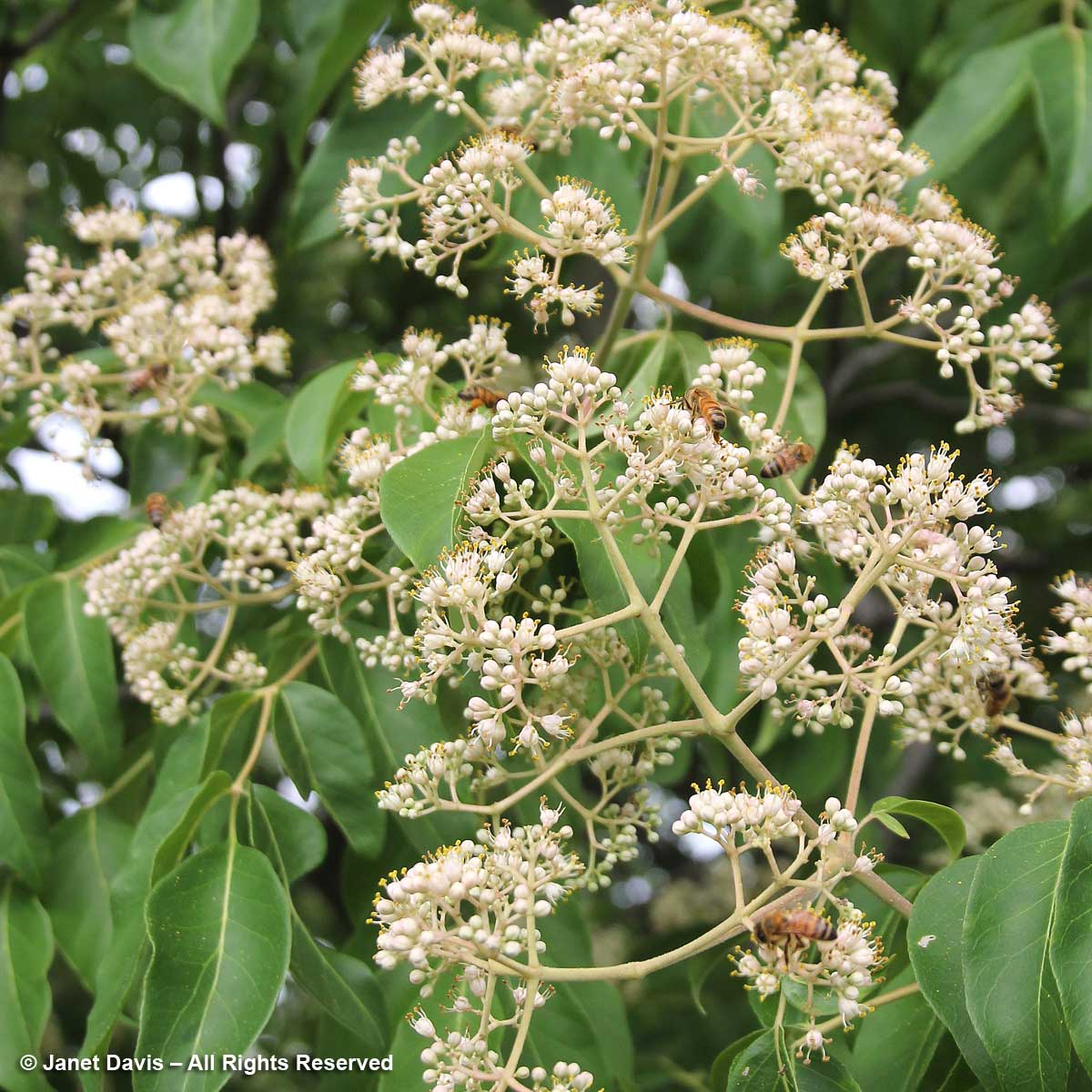
Common milkweed (Asclepias syriaca) is well-known for its role hosting monarch butterfly caterpillars through their metamorphosis. I celebrated this native plant on January 16th. And if you didn’t read my summer 2019 saga of our little Monarch chrysalids Bella and Bianca, you can find it here. But be warned, it’s sad.
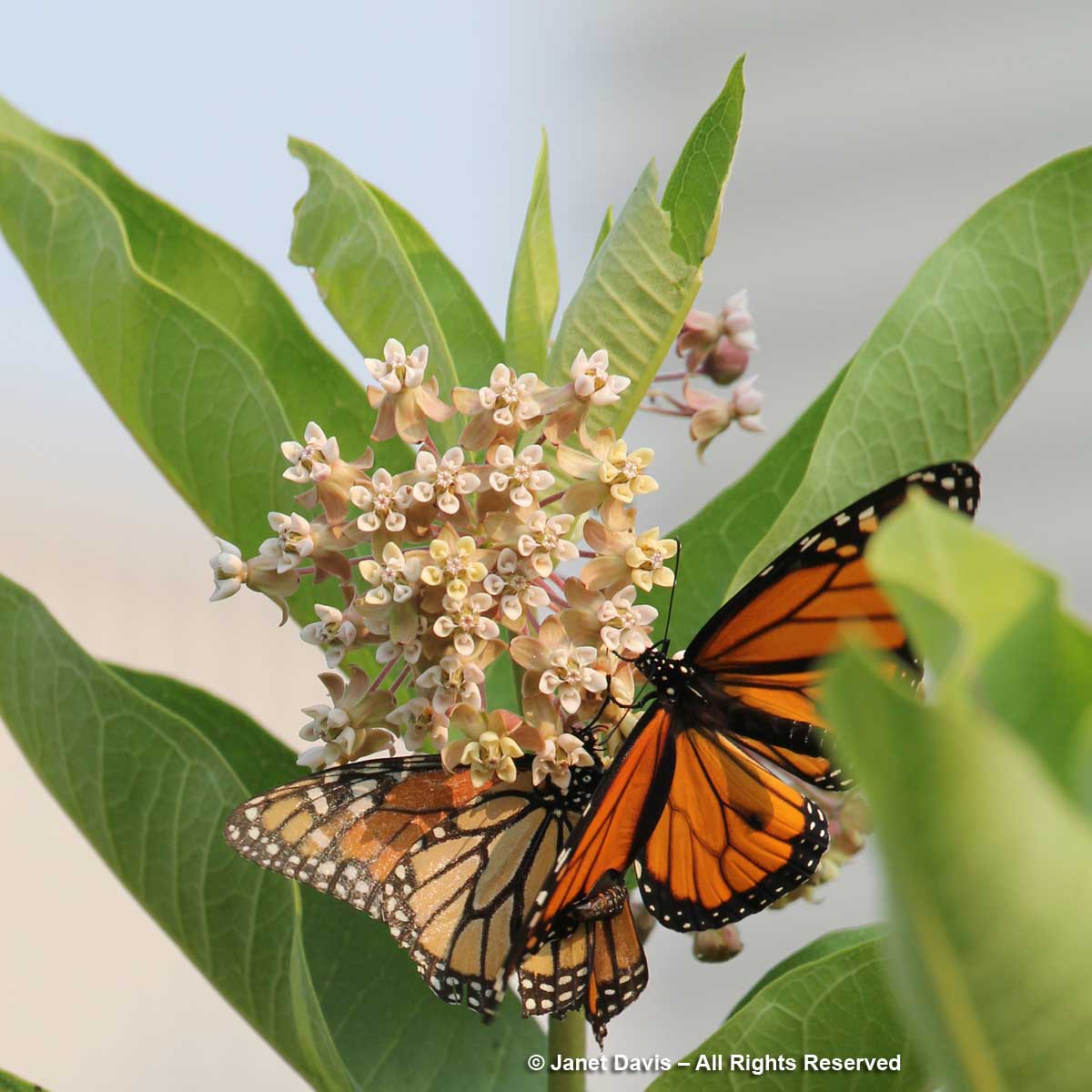
January 17th saw me showing off the most beautiful pollen ever in the pollen sacs or “corbiculae” of my little honey bee foraging on crimson-pink Knautia macedonica.
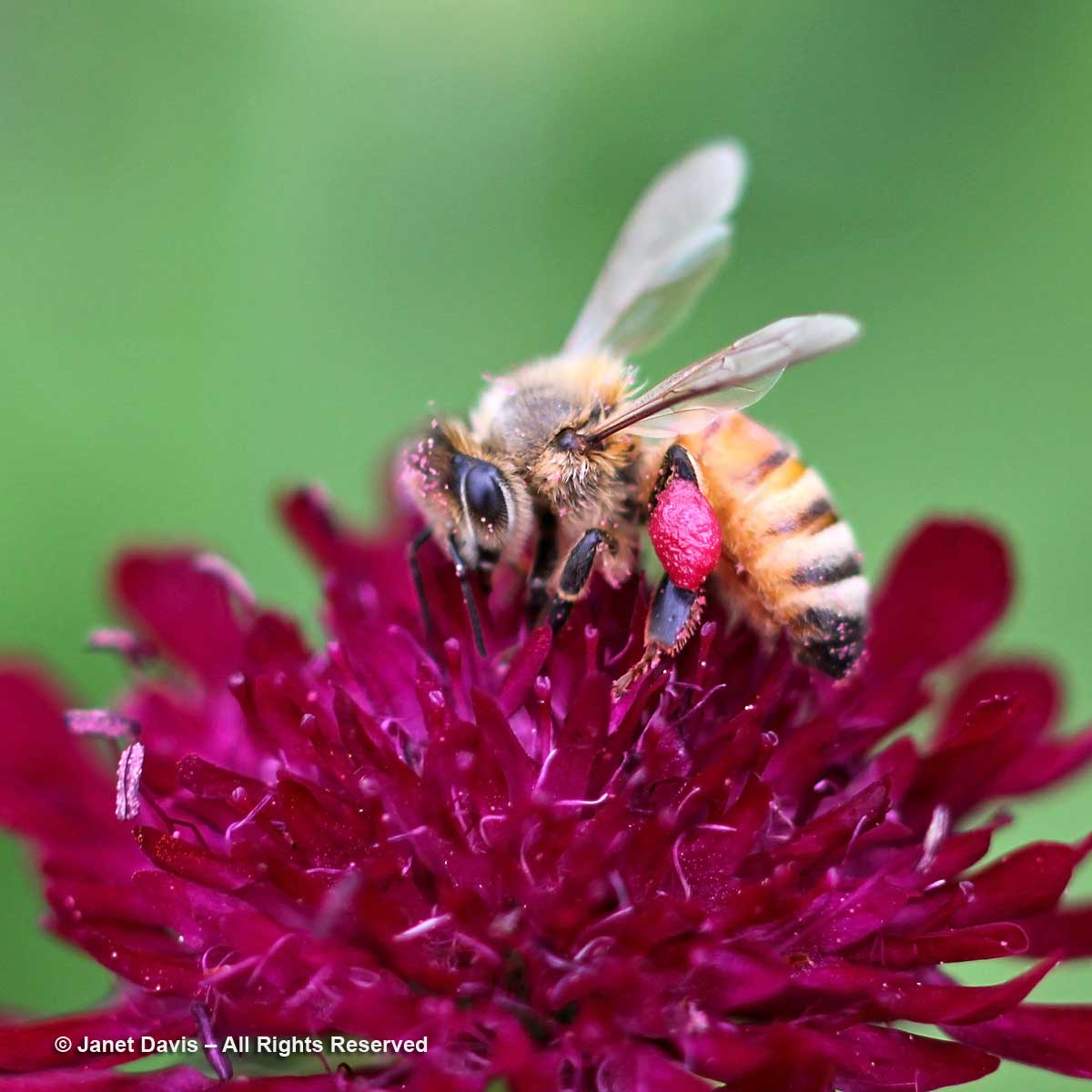
The big, beautiful chalices of tulip tree (Liriodendron tulipifera), being pollinated by a big Eastern carpenter bee (Xylocopa virginica), below, was the subject of my January 18th post
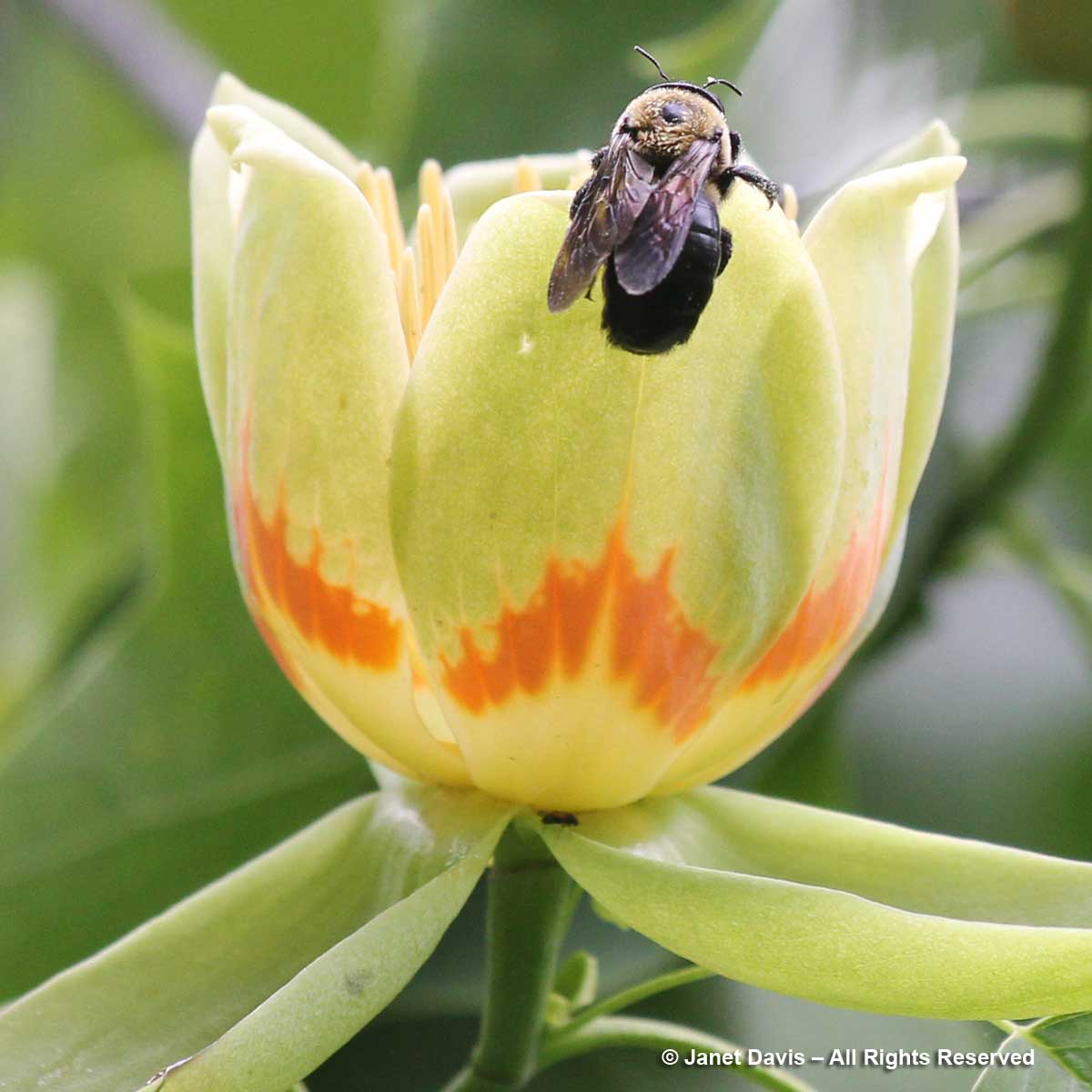
The European woolcarder bee (Anthidium manicatum) is not my favourite insect. Males police their flower territories aggressively, chasing away native bees from the blossoms it likes, especially rusty foxglove (Digitalis ferruginea) below. That was my January 19th post.
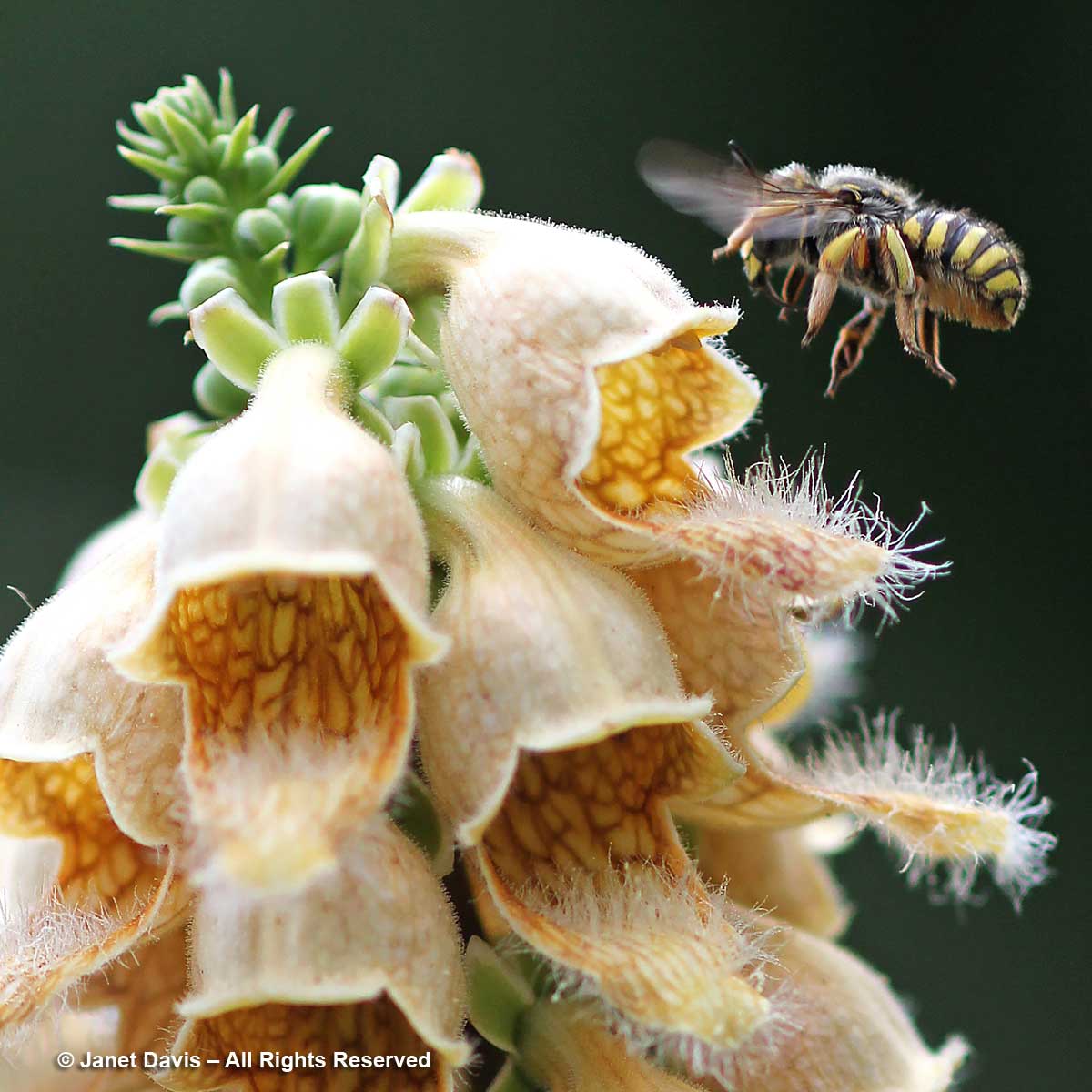
On January 20th, I took a little trip to South Africa to enjoy native Cape honey bees (Apis mellifera capensis) on native calla lilies (Zantadeschia aethiopica), below. And I included a blog I wrote on Johannesburg artist William Kentridge’s fabulous garden.
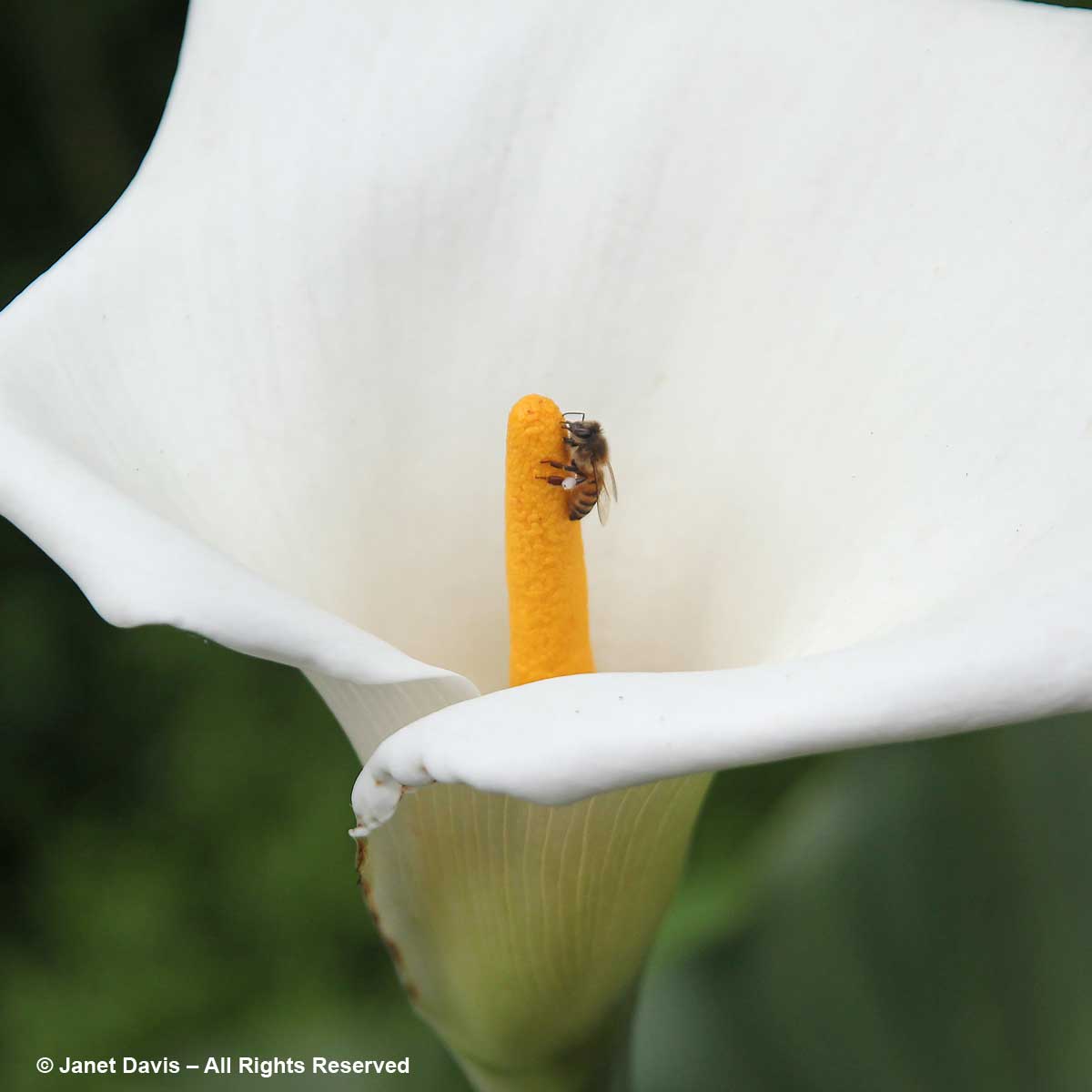
The next day, January 21st, I travelled all the way to New Zealand to find non-native bumble bees (imported from the UK) on native hebes. One of my hebes, white-flowered H. salicifolia, was growing on the hillside overlooking the dock for our fantastic overnight cruise on Doubtful Sound in Fiordland, one of my best travel experiences ever.
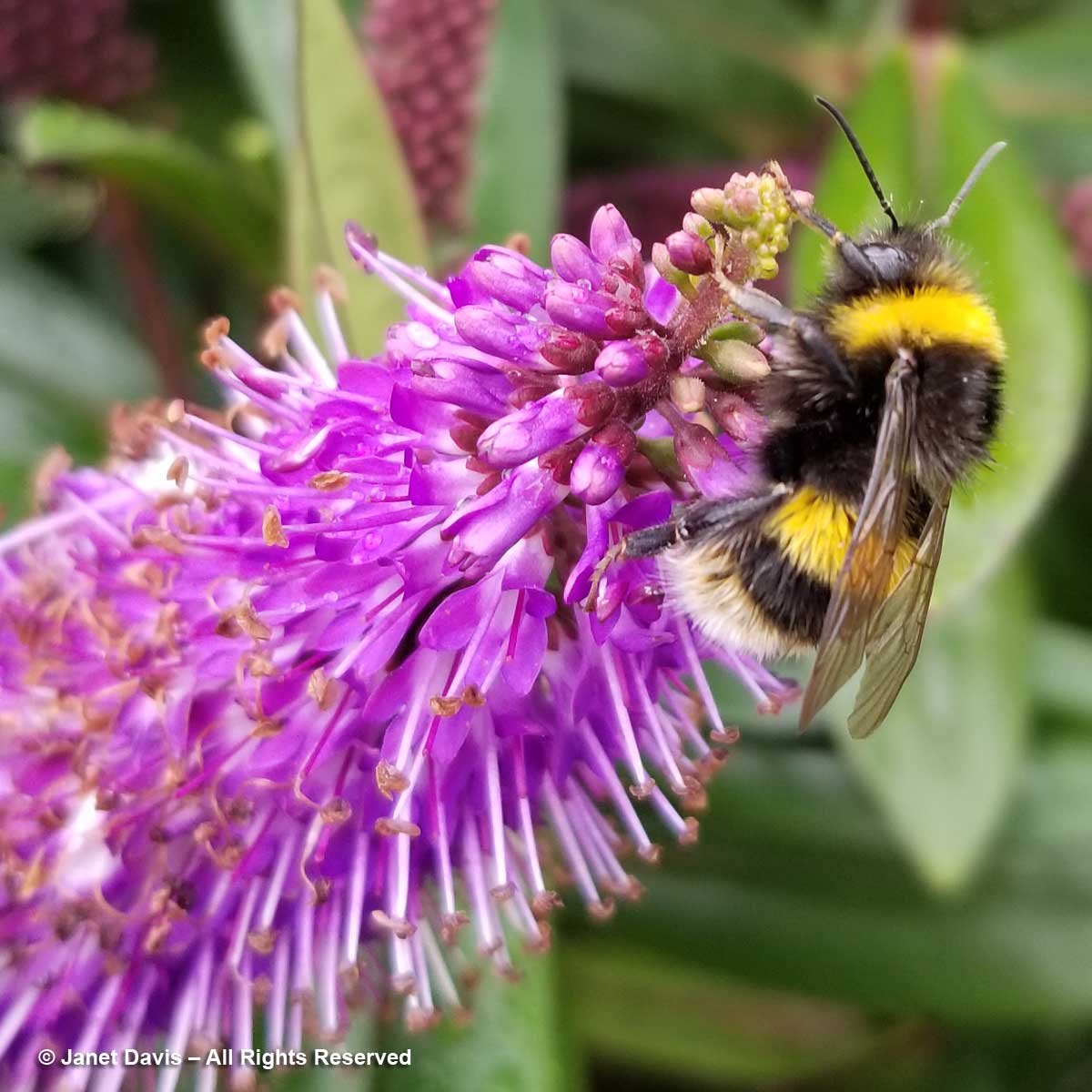
Peaches! Who doesn’t love juicy peaches? On January 22nd I paid tribute to a hardy variety of this luscious fruit (Prunus persica ‘Reliance’), being pollinated by a honey bee, below. I even included my recipe for spicy peach-and-pepper relish.
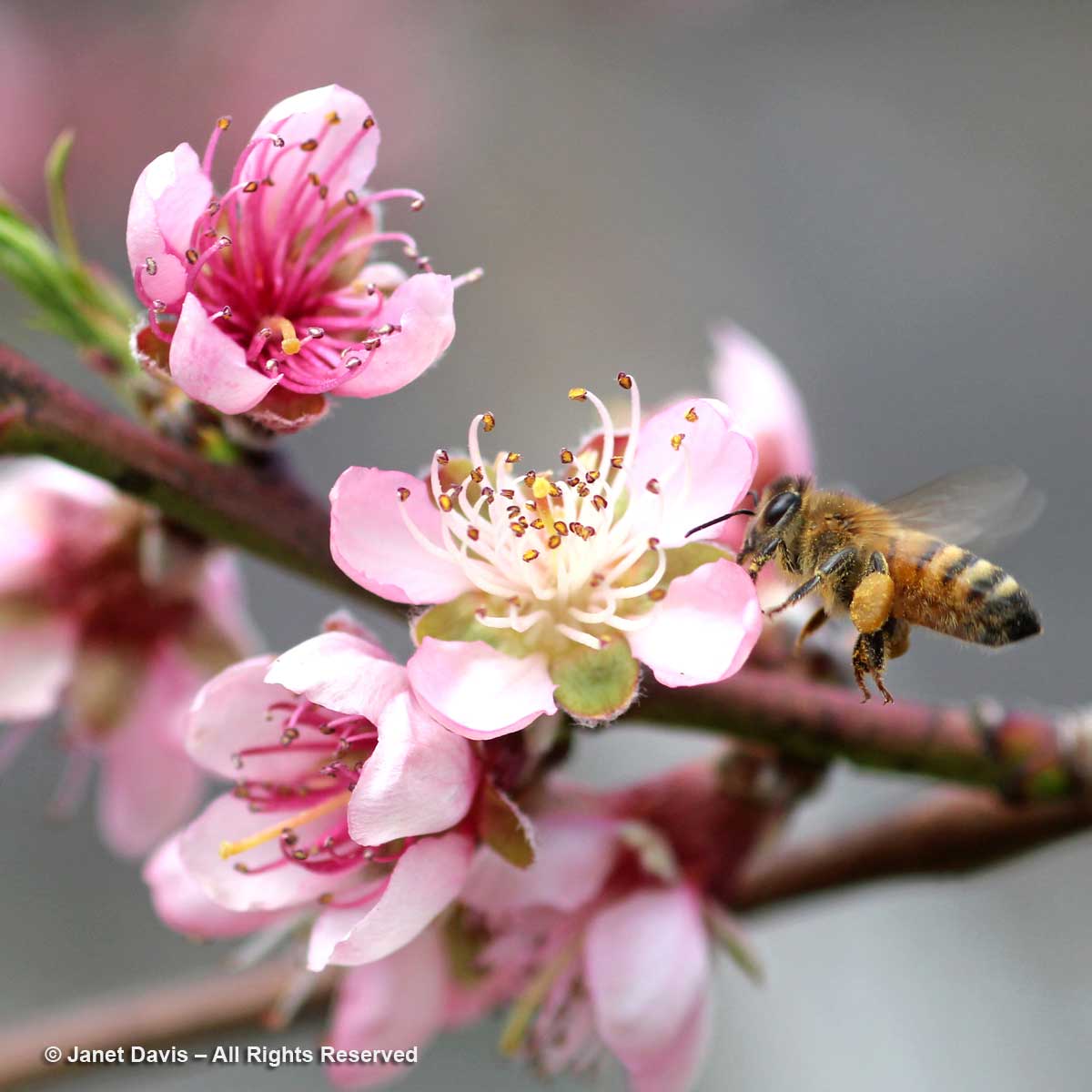
I recalled a divine hike to the top of a North Carolina Blue Ridge mountain called Craggy Gardens on January 23rd. There I was lucky to find bumble bees and butterflies on the beautiful Catawba rhododendron or mountain rosebay (R. catawbiense).
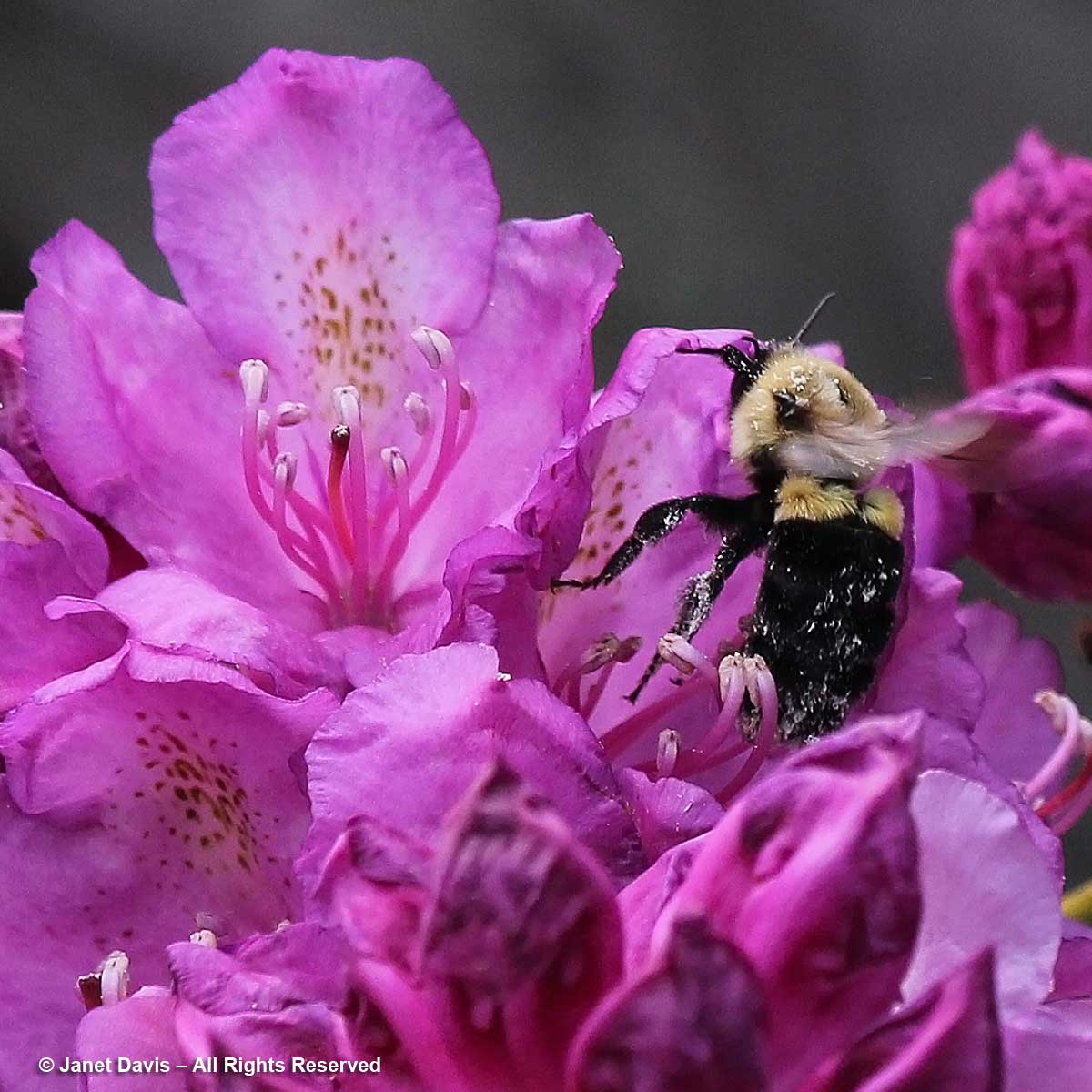
Nectar-rich lindens, aka lime trees or basswoods (Tilia spp.), were my focus on January 24th. I also included the latest research on bumble bee death below these magnificent trees.
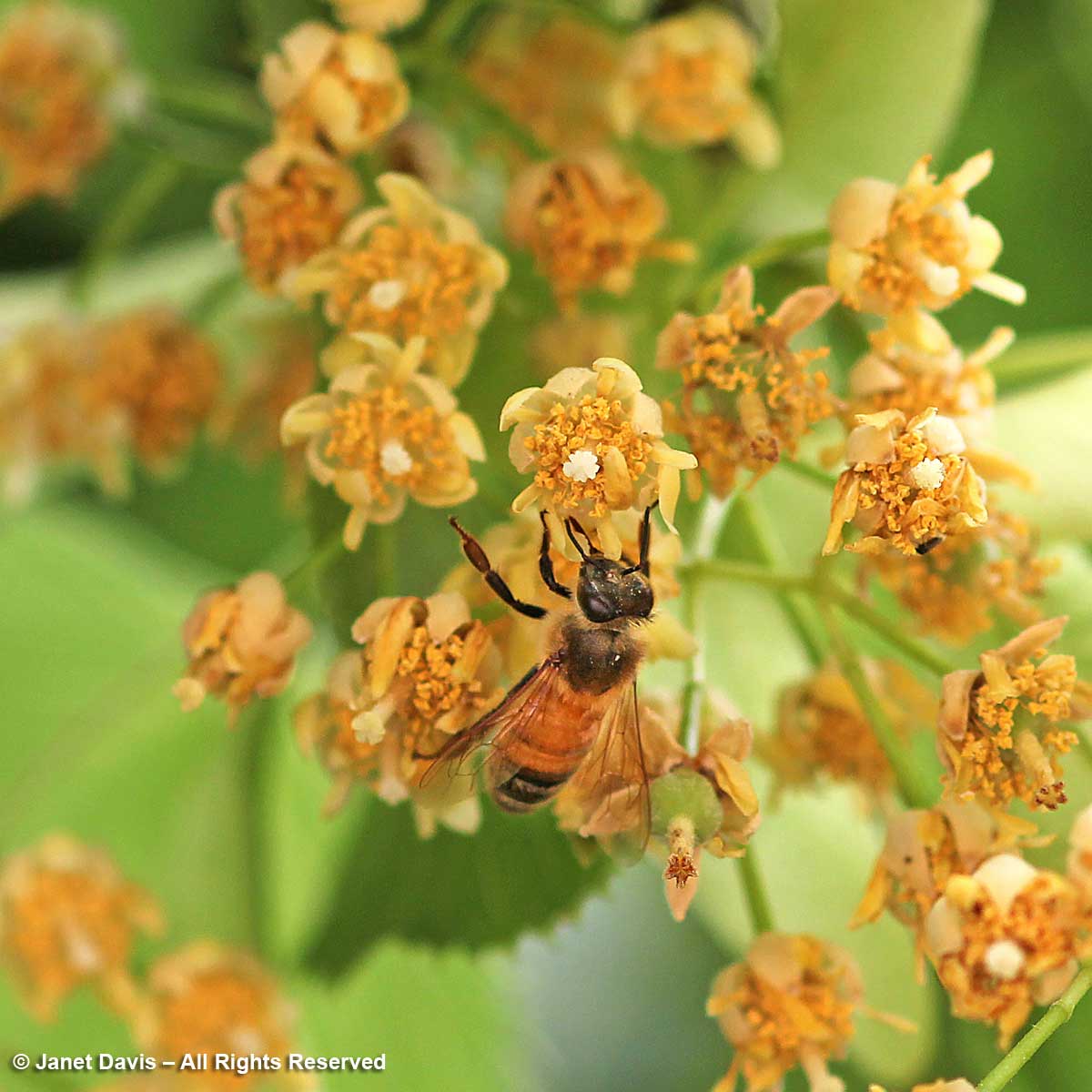
On January 25th I celebrated the beautiful, butterfly-friendly, annual Mexican daisy (Tithonia rotundifolia).
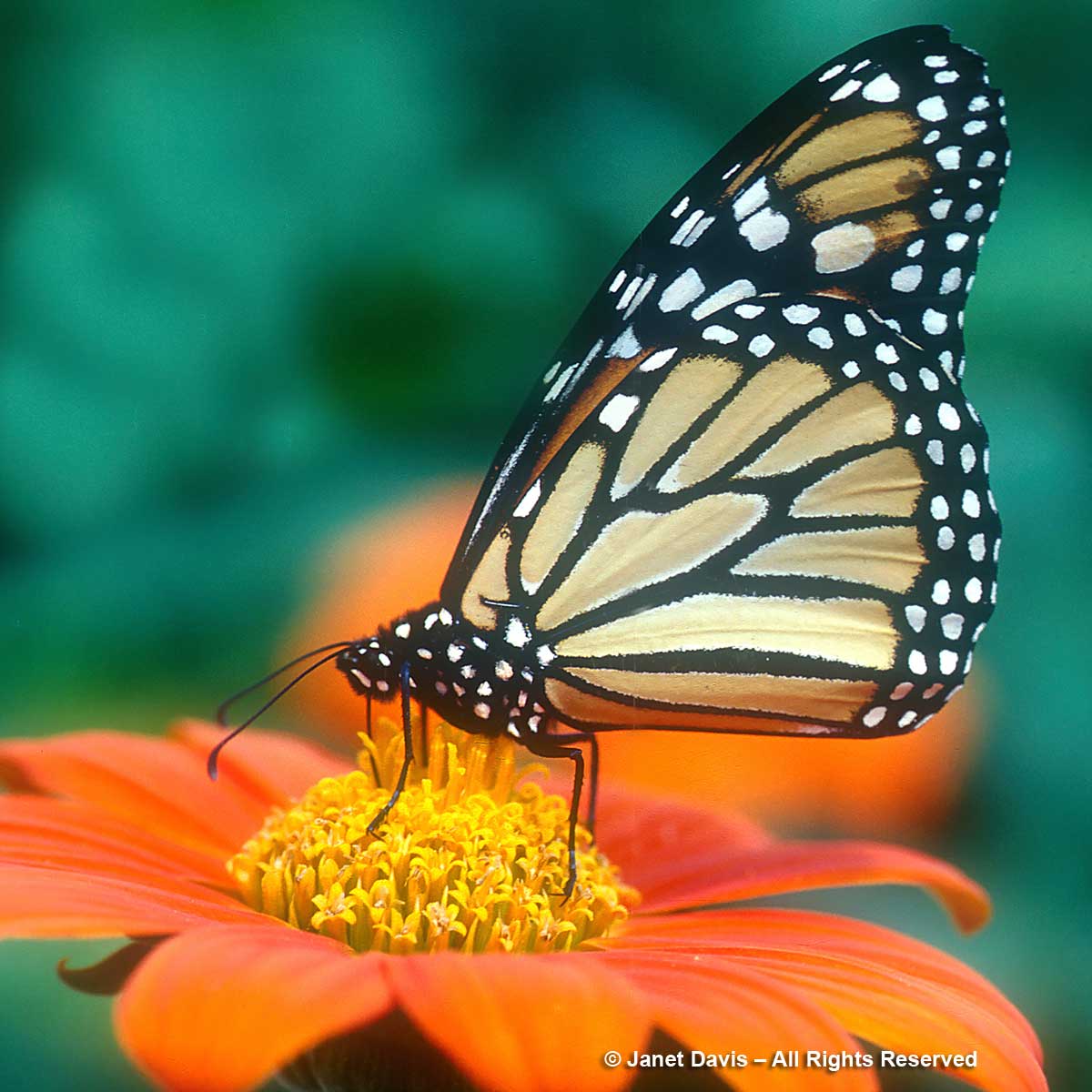
Persicaria amplexicaulis ‘Firedance’ with a bumble bee was my pin-up pollinator plant for January 26th.
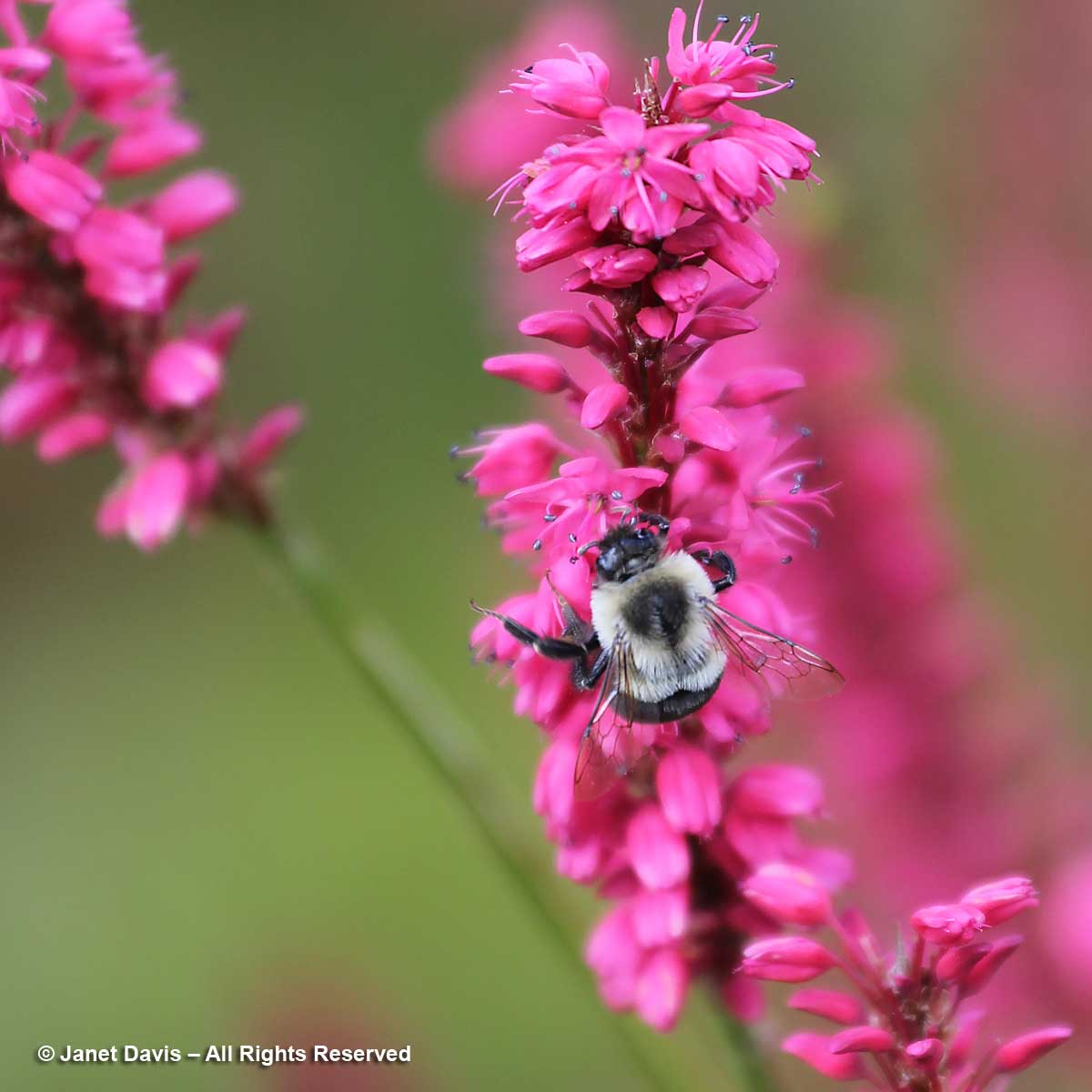
It was a blue day on January 27th – blue for California lilac or Ceanothus, that is! And I told a little beekeeping story about hives on a hotel’s roof
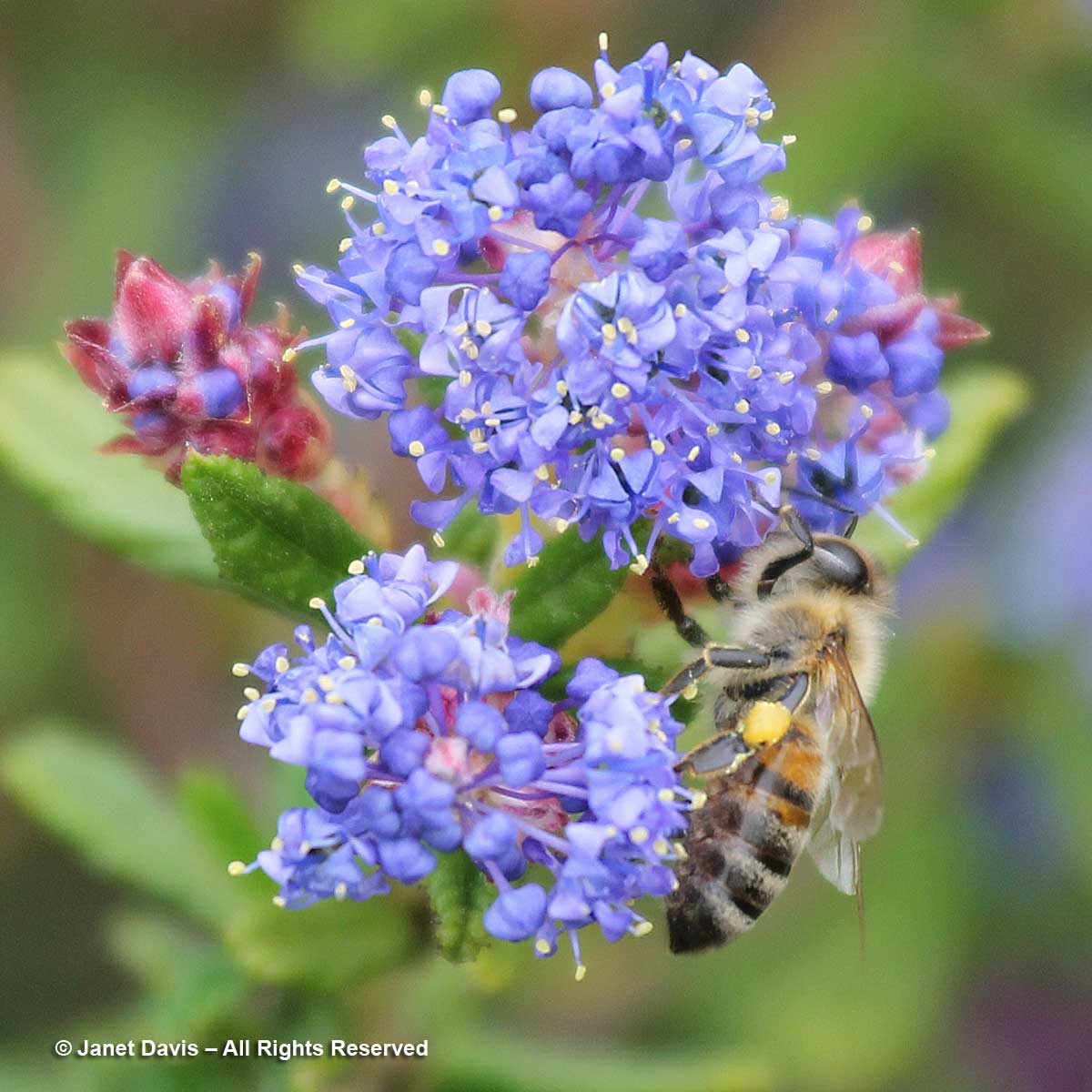
Who doesn’t love old-fashioned hollyhocks (Alcea rosea)? Bees love gathering pollen from those big, silky blossoms, as I demonstrated on January 28th.
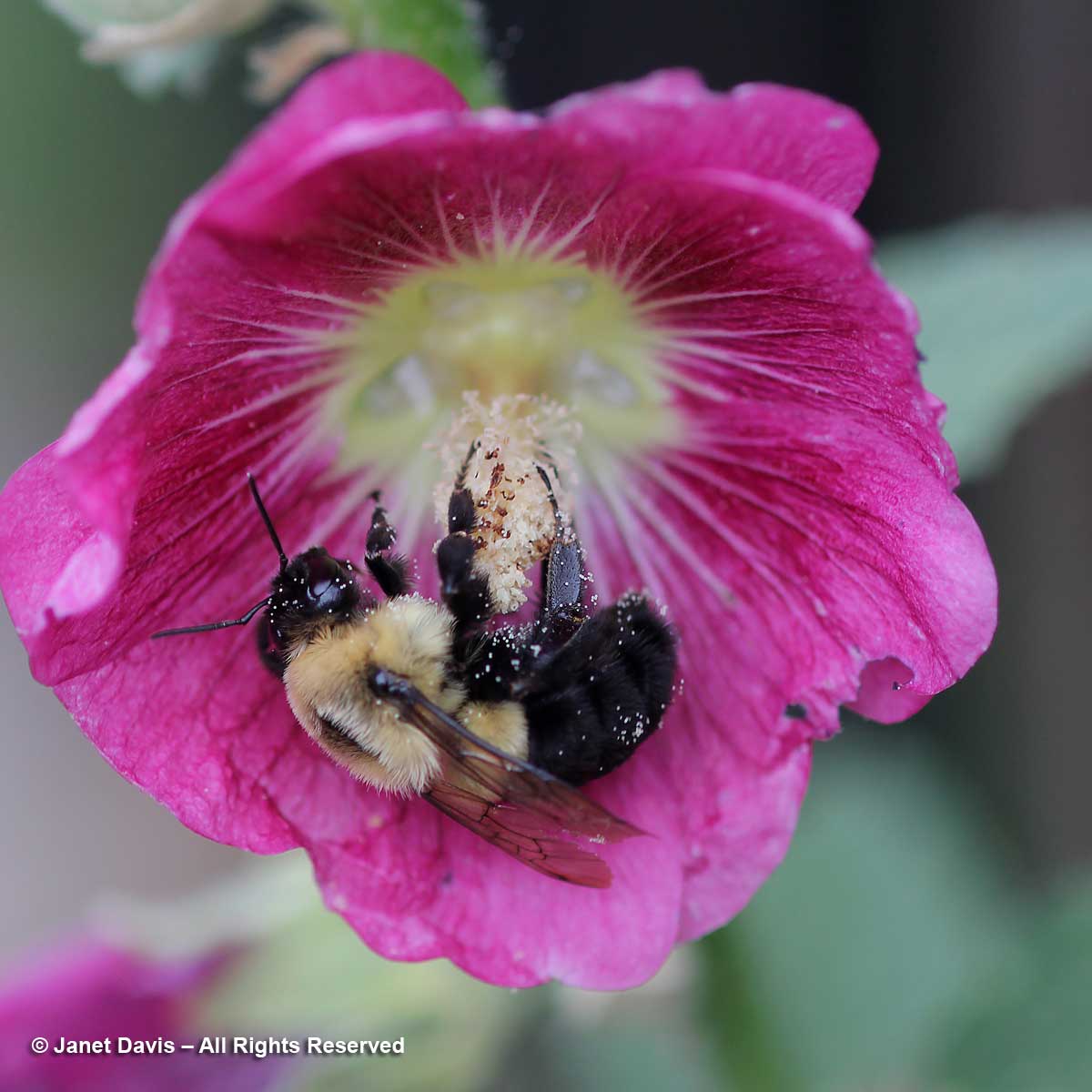
Since he did a lot of experimentation with them, I cued up Charles Darwin on January 29th for my post on toadflax (Linaria vulgaris). And I recalled a peek into the hives at baby bees at the University of Guelph Honey Bee Research Centre.
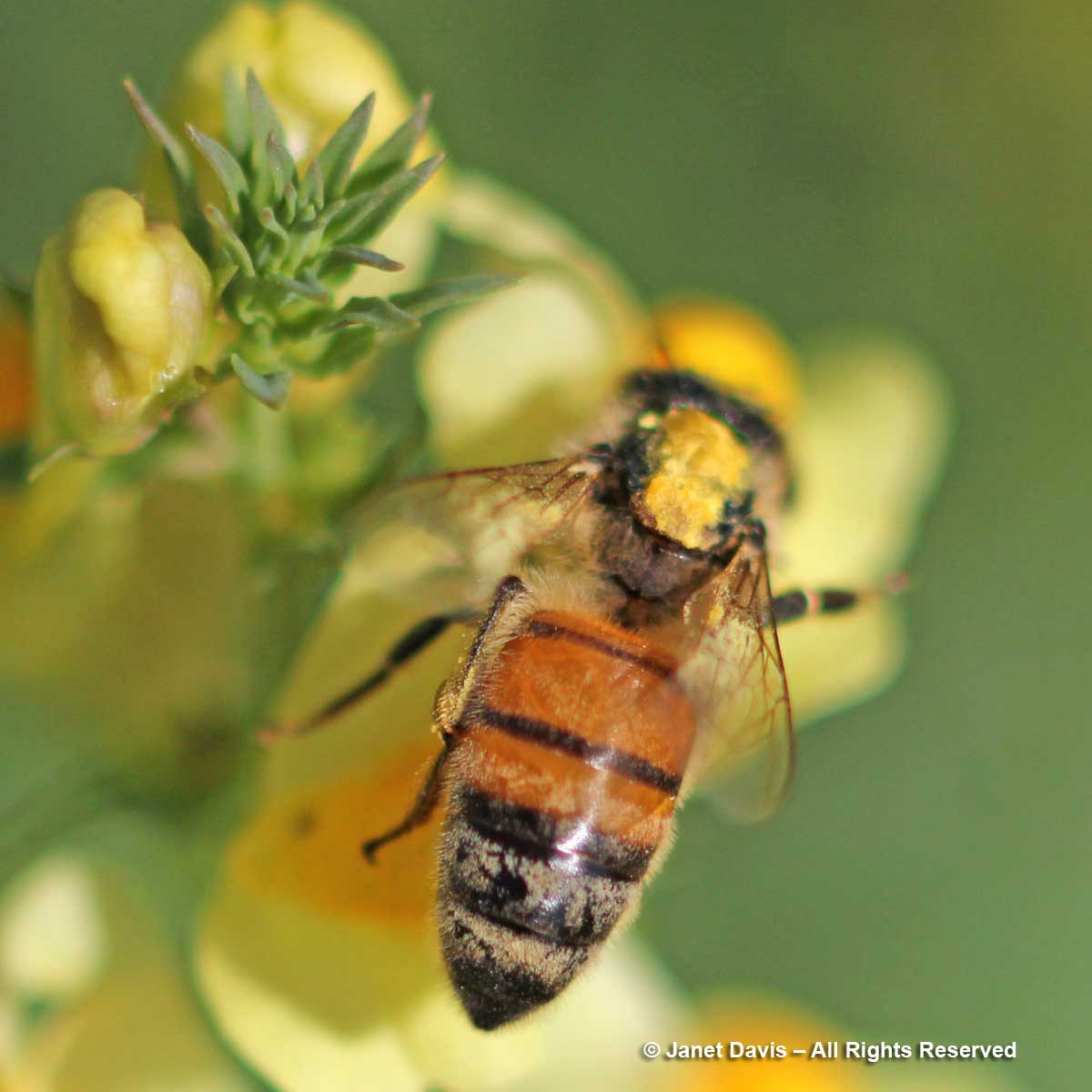
Luscious lupines – both wild lupine (Lupinus perennis), below, and Russell hybrid lupine (L. polyphyllus) starred in my post for January 30th – along with bumble bees, of course. And I couldn’t mention lupines without my blog about Miss Rumphius, the lupine lady.
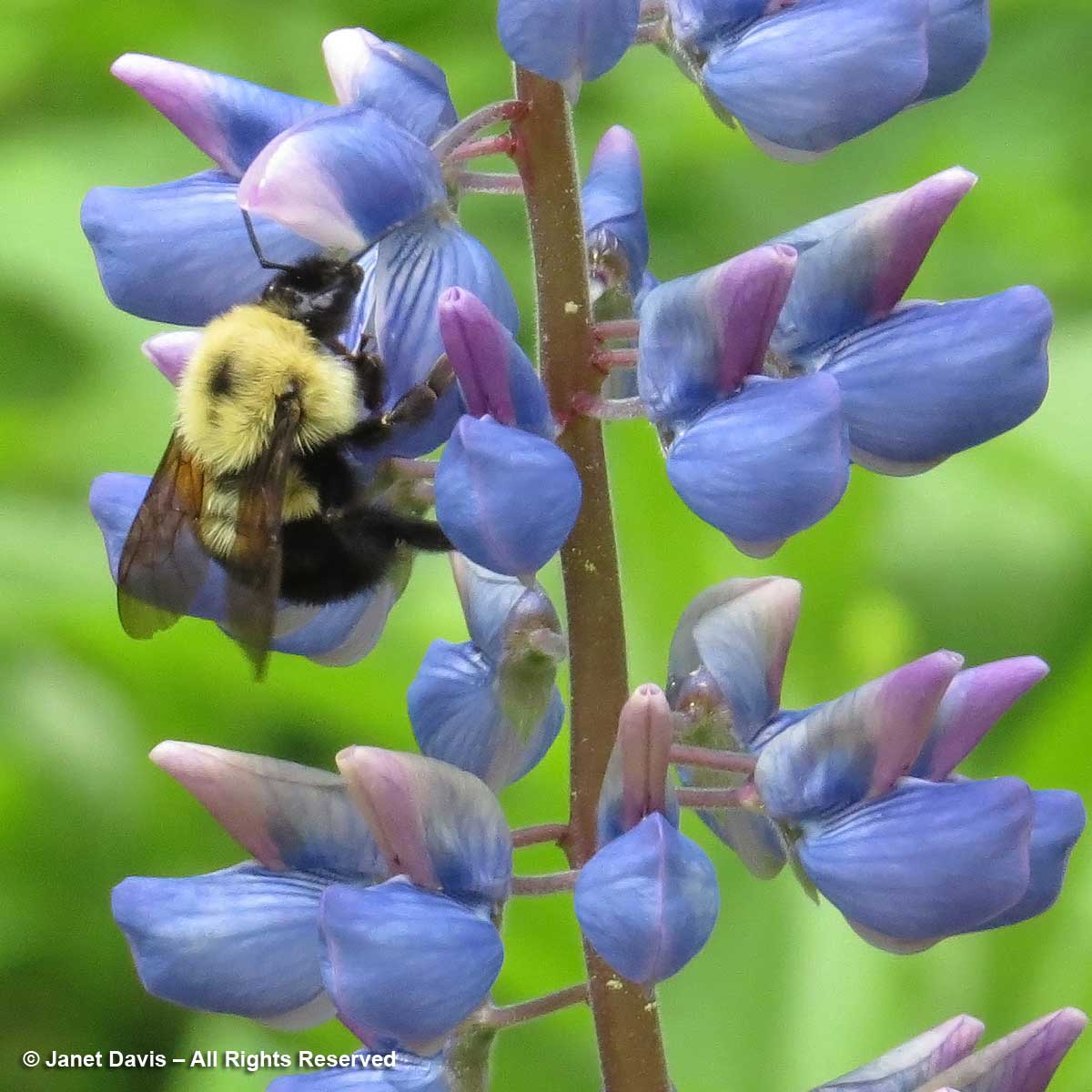
In researching my post for January 31st, I finally learned the meaning of the common name of the tall prairie perennial Silphium laciniatum, i.e. “compass plant”. Yes, it’s the leaves. And because the finest compass plants I’ve ever seen were at Chicago’s Lurie Garden, I linked to my blog about that spectacular, Piet Oudolf-designed garden in Millennium Park.
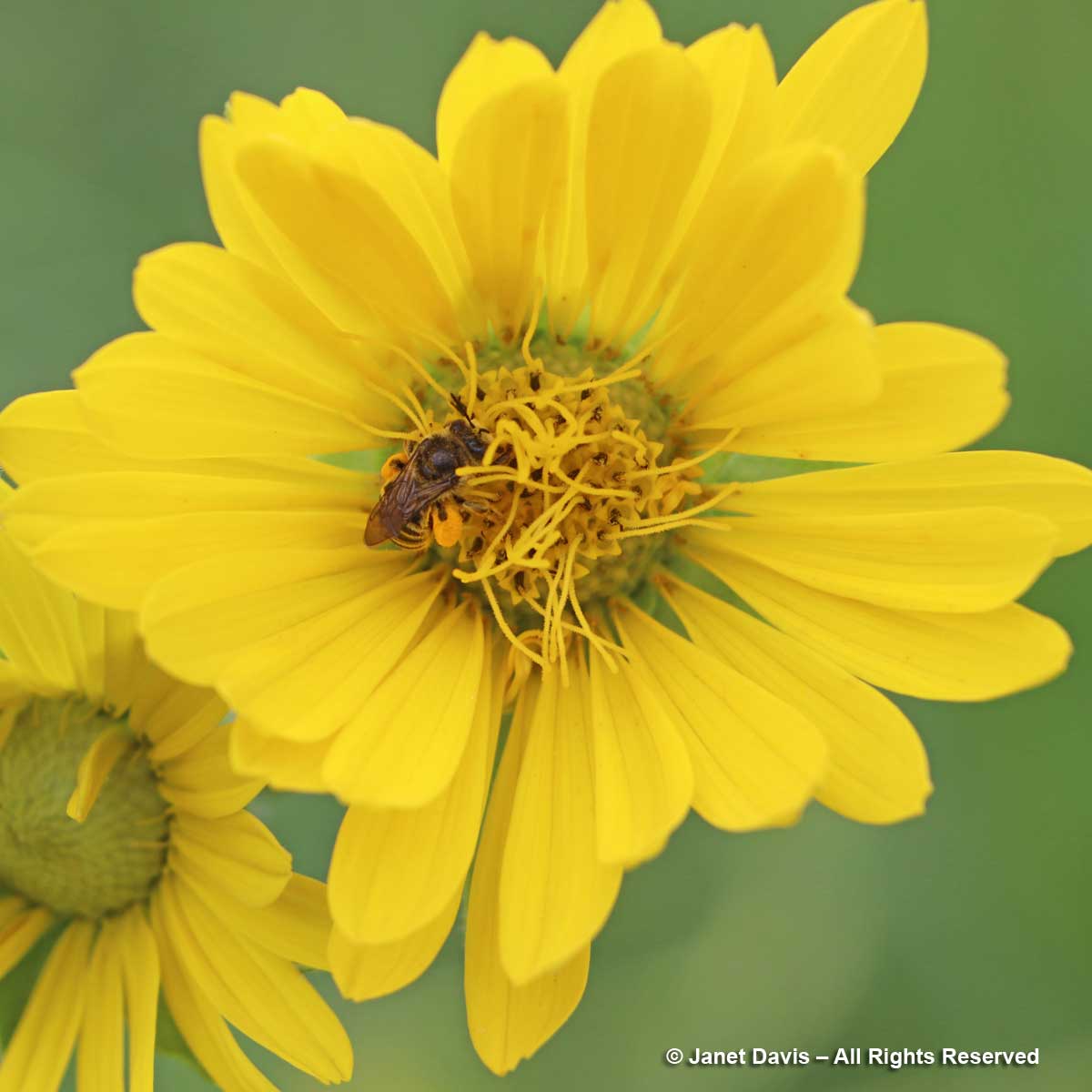
And that’s it for January! Three months of my Covid winter project down, only two to go!
